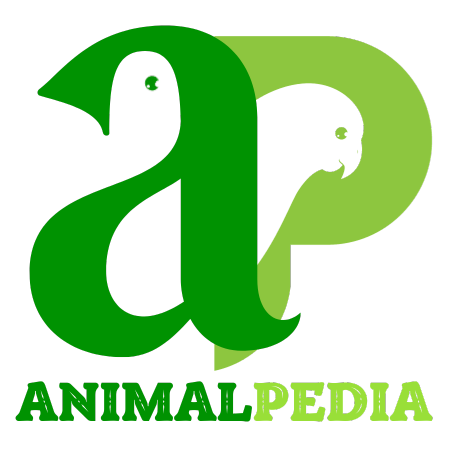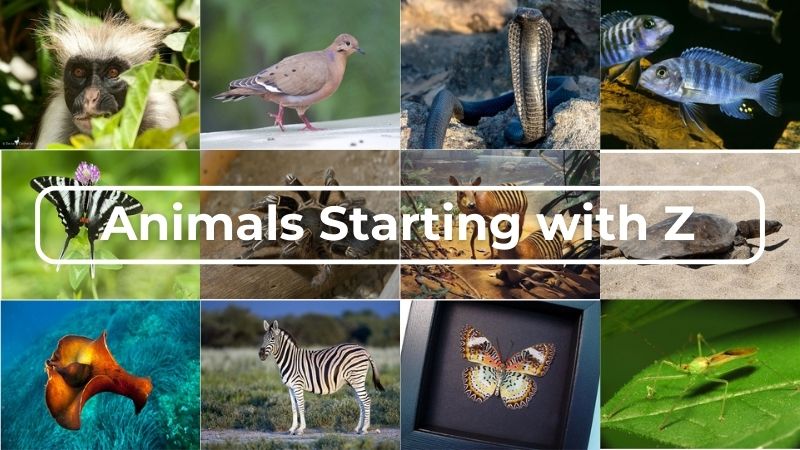Mammals That Start with Z
The animal kingdom is brimming with fascinating creatures, and exploring them through unique perspectives is always a delight. This time, we turn our attention to animals whose names begin with the letter ‘Z.’ From the striking zebra to the stealthy zorilla and the vibrant zorse, this collection showcases the incredible diversity of nature. Here are 7 fascinating mammals starting with the letter Z, each showcasing unique traits and characteristics:
| Zebra | Zebra Duiker | Zorse | Zebu |
| Zokor | Zonkey | Zorilla |
1. Zebra
Zebras (Equus spp.) are native to the plains and mountains of Africa. Zebras typically stand about 4-5 ft (1.2-1.5 m) at the shoulder, 7-8 ft (2.1-2.4 m) long and weigh around 440-990 lbs (200-450 kg). They have small hooves, large ears, and muscular legs. Zebras, known for their sociability, exhibit diverse social structures across various species. In certain species, a single male zebra oversees a group of females, while others live in groups without forming substantial social connections. The composition of their herds is often dynamic, with zebras switching companions every couple of months.
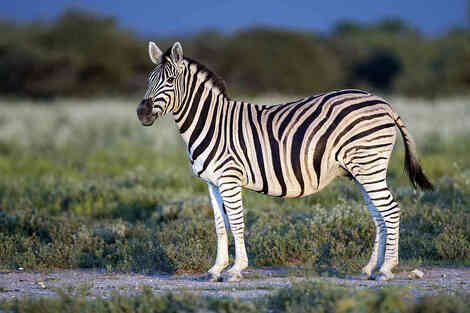
| Attributes | Quick facts |
|---|---|
| Size | 4-5 ft (1.2-1.5 m) at the shoulder, 7-8 ft (2.1-2.4 m) long. |
| Weight | 440-990 lbs (200-450 kg). |
| Lifespan | 20-25 years in the wild. |
| Habitat | Grasslands, savannas, and open woodlands in Africa. |
| Diet | Herbivorous; primarily grasses. |
| Social Structure | Live in herds, often led by a dominant stallion. |
| Conservation | Plains Zebra: Least Concern; Grevy’s Zebra: Endangered. |
Fun fact: The practical function of their black and white stripes is to deter blood-sucking horse flies.
2. Zebra Duiker
Zebra Duiker (Cephalophus zebra) is a small antelope primarily found in Liberia, Ivory Coast, Sierra Leone, and occasionally Guinea. It resides in lowland primary rainforests, particularly by clearings and along forest margins. The Zebra Duiker has a gold or red-brown coat with 12-16 distinctive zebra-like stripes, dark markings on their upper legs, and russet faces. An adult can grow to 3.3 ft in length, 20 in in height, and weighs between 40-55 lbs. Zebra Duikers are solitary animals with nocturnal habits in the wild. They form pair bonds for breeding purposes, with both the male and female participating in the defense of young and home range.
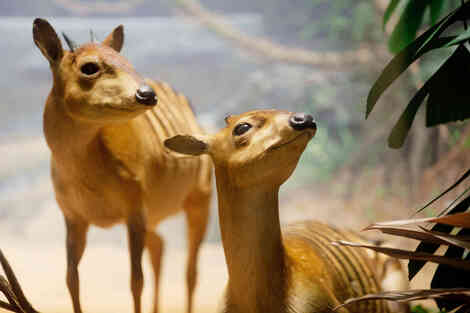
| Attributes | Quick facts |
|---|---|
| Size | 2.3-3.3 ft (70-100 cm) in length, 16-20 in (40-50 cm) at shoulder height. |
| Weight | 40-55 lbs (18-25 kg). |
| Lifespan | 10-15 years in the wild. |
| Habitat | Dense lowland rainforests in West Africa, particularly Liberia, Côte d’Ivoire, and Sierra Leone. |
| Diet | Herbivorous; primarily eats leaves, fruits, seeds, and shoots. |
| Social Structure | Solitary or found in pairs. |
| Conservation | Vulnerable due to habitat destruction and hunting for bushmeat. |
Fun fact: While they look like tiny little deer, they’re in the family Bovidae – more closely related to cows and buffalo.
3. Zorse
The Zorse is a hybrid animal. It comes from a zebra and a horse. Zorses live in Africa and Asia. They inhabit grasslands and forests. Zorses are bigger than zebras. They have wider bodies and longer legs. Their coat has stripes. These stripes are less bold than a zebra’s. Zorses are strong and fast. They can run up to 40 miles per hour. Zorses are social creatures. They live in large herds. A dominant male leads the herd. They eat grasses mostly. They also eat leaves, fruits, and plants. Zorses stand 4.5-5.5 ft (1.4-1.7 m) at the shoulder. Their height is 57”-72.8” (145-185 cm). Their body length is 76.8”-98.4” (195-250 cm). They weigh 507-1,000 lb (230-454 kg).
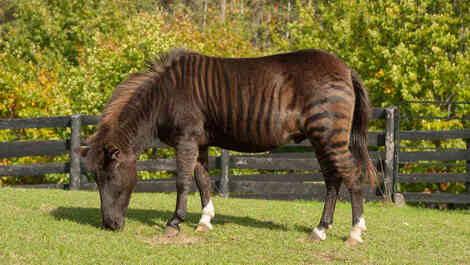
| Attributes | Quick facts |
|---|---|
| Size | 4.5-5.5 ft (1.4-1.7 m) at the shoulder. |
| Weight | 507-1,000 lb (230-454 kg). |
| Lifespan | 15-20 years. |
| Habitat | Found in domestic or semi-wild environments; habitat depends on management. |
| Diet | Herbivorous; grasses, shrubs, and hay. |
| Social Structure | Social; often interacts with humans or herds of other animals. |
| Conservation | Not a natural species; relies on zebra and horse populations. |
Fun fact: Their structured stomach can digest food continuously.
4. Zebu
Zebu (Bos taurus indicus) is a domesticated bovine adapted to tropical and subtropical regions. They thrive in hot, arid environments and are prevalent in Africa, South America, and Southeast Asia. It is easily spotted due to the large hump on its front shoulder. Its coat is usually light in color and it has a thick, ample hide which enables it to withstand the heat. It heights up to 5.2 ft (1.58 m) and weighs up to 2,400 lbs (1,080 kg). It is a calm, docile animal that requires little care. It is appreciated for its provision of milk, meat, hide, and horns. Despite being a domesticated species, it maintains a herd-based lifestyle.
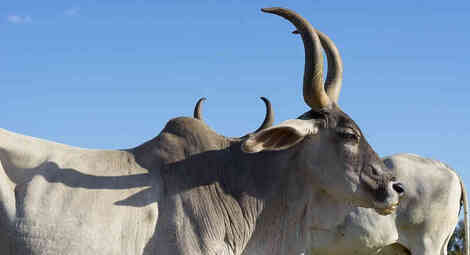
| Attributes | Quick facts |
|---|---|
| Size | 4-5 ft (1.2-1.5 m) at the shoulder, with a body length of 6-8 ft (1.8-2.4 m). |
| Weight | 600-2400 lbs (1080 kg), depending on the breed. |
| Lifespan | 15-20 years. |
| Habitat | Domestic; adapted to tropical climates in South Asia, Africa, and parts of South America. |
| Diet | Herbivorous; grasses, hay, and agricultural byproducts. |
| Social Structure | Highly social; lives in herds with established hierarchies. |
| Conservation | Domesticated species; populations are stable, with some breeds facing risks of decline. |
Fun fact: Selective breeding has resulted in Zebus that are smaller than other domestic cattle.
5. Zokor
Zokors (Myospalax) are burrowing rodents native to northern China, southern Mongolia, and western Siberia. They are medium-sized rodents weighing from 5-12 oz (140-340 g) and having a body 6-9 in (15-23 cm) long. Their fur ranges in color from grayish to reddish brown or pinkish buff. They are more active during spring and autumn, bearing one litter of four to six young in the spring.
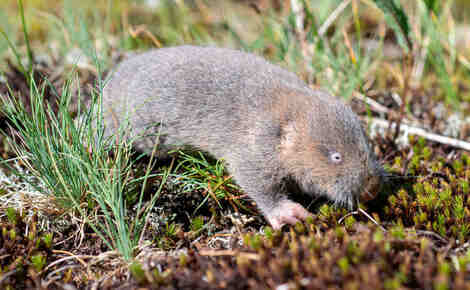
| Attributes | Quick facts |
|---|---|
| Size | 6-9 in (15-23 cm). |
| Weight | 5-12 oz (140-340 g). |
| Lifespan | 3-5 years. |
| Habitat | Underground burrows in grassy plains and mountain meadows of Central Asia. |
| Diet | Herbivorous; roots, tubers, and bulbs. |
| Social Structure | Solitary. |
| Conservation | Least Concern. |
Fun fact: They can burrow tunnels that can stretch several hundred feet.
6. Zonkey
Zonkey is a hybrid offspring resulting from the crossbreeding of a zebra and a donkey. In the wild, they inhabit typical zebra habitats such as the savanna and open woodlands. They look like small horses with tan, brown, or gray skin. The underside is lighter. The Zonkey’s dark stripes are most visible on these light areas and their legs. They stand between 4-5 ft (1.2-1.5 m) at the shoulder and weigh between 500-700 lbs (227-318 kg). Zonkeys are active during the day and are herd animals that seek other Zonkeys or equids. They are grazing animals and sometimes browse in the right conditions.
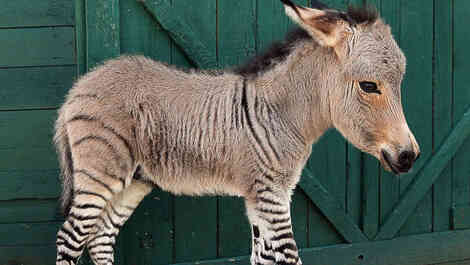
| Attributes | Quick facts |
|---|---|
| Size | 4-5 ft (1.2-1.5 m) at the shoulder. |
| Weight | 500-700 lbs (227-318 kg). |
| Lifespan | 15-20 years. |
| Habitat | Domestic or semi-wild; depends on habitat of parent species. |
| Diet | Herbivorous; grasses, shrubs, and hay. |
| Social Structure | Social, often living with herds of zebras or donkeys. |
| Conservation | Not a natural species; depends on zebra and donkey populations. |
Fun fact: Despite their zebra-inspired stripes, their facial and ear structures are more similar to those of donkeys.
7. Zorilla
Zorilla (Ictonyx striatus) is a member of the Mustelidae family that resembles a skunk. It has a slender body, measuring 11-15 in (28-38 cm), with a bushy white tail of 6-10 in (15-25 cm), Its fur is long and black, with white stripes on the back and white spots on the face. The Zorilla weighs from 0.6 to 1.3 kg (1.3 to 2.9 lb). This creature is usually solitary and hunts at night. It feeds on various small rodents, snakes, birds, amphibians, and insects. The Zorilla lives predominantly in dry climates, such as the savannahs and open country of Central, Southern, and sub-Saharan Africa, excluding the Congo basin and the more coastal areas of West Africa.
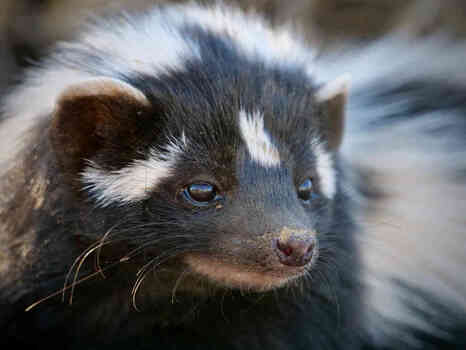
| Attributes | Quick facts |
|---|---|
| Size | 11-15 in (28-38 cm), with a tail of 6-10 in (15-25 cm). |
| Weight | 1-3 lbs (0.5-1.4 kg). |
| Lifespan | 5-7 years in the wild, up to 13 years in captivity. |
| Habitat | Grasslands, savannas, and open woodlands of sub-Saharan Africa. |
| Diet | Carnivorous; eats insects, small mammals, birds, and eggs. |
| Social Structure | Solitary, except during breeding. |
| Conservation | Least Concern. |
Fun fact: When they feel threatened, they can emit a foul-smelling fluid from their anal glands.
Now that we’ve explored some of mammals starting with the letter Z, let’s dive deeper into another specific category: fish that captivate us with their diversity and unique characteristics.
Fish that start with Z
Let’s dive into the underwater world and explore the beautiful fish species starting with the letter Z.
| Zebra Lionfish | Zamurito | Zebrafish |
| Zebra Moray Eel | Zebra Pleco | Zebra Shark |
8. Zebra Lionfish
The Zebra lionfish is a marine fish. It belongs to the Scorpaenidae family. This fish lives in the Indo-Pacific region. It stays in coral reefs and rocky areas. Zebra lionfish swim in coastal waters. They go down to about 80 m deep. Their body is long and flat. It has orange, white, and black stripes. The Zebra lionfish has big pectoral fins. These fins look like fans. They spread out on both sides. Its front dorsal fin has 13 sharp spines. The back dorsal fin has 10-11 soft rays. This fish grows to 5-15 in (12-38 cm). It can weigh up to 3 lbs (1.4 kg). Zebra lionfish are social. They hunt in groups of two or three.
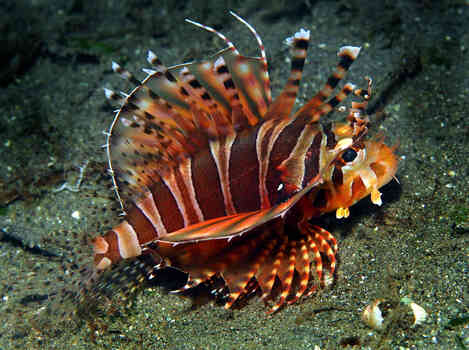
| Attributes | Quick facts |
|---|---|
| Size | 5-15 in (12-38 cm). |
| Weight | Up to 3 lbs (1.4 kg). |
| Lifespan | 5-15 years in the wild. |
| Habitat | Coral reefs and rocky crevices in the Indo-Pacific region. |
| Diet | Carnivorous; feeds on small fish and crustaceans. |
| Social Structure | Solitary, except during breeding. |
| Conservation | Least Concern, though invasive in some regions. |
Fun fact: Zebra lionfish can expand its stomach up to 30 times its regular size.
9. Zamurito
Zamurito (Calophysus macropterus), is a species of catfish that can be found in the Amazon and Orinoco basins. The Zamurito is known to commonly attack fishes caught in fishermen’s nets and seines, as well as those hooked on trotlines or gaffed. Despite its aggressive behavior towards other fish, many who have kept the Zamurito in aquariums report no apparent signs of aggression.
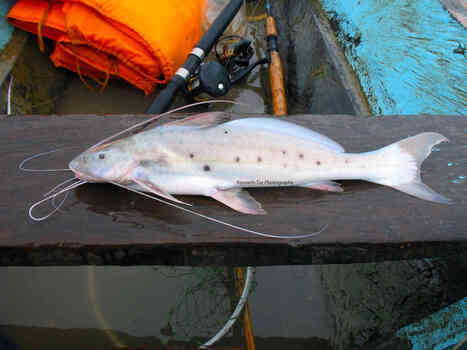
| Attributes | Quick facts |
|---|---|
| Size | Estimated 10-15 in (25-38 cm). |
| Weight | 1-2 lbs (0.45-0.9 kg). |
| Lifespan | Unknown, likely 10+ years. |
| Habitat | Found in freshwater rivers in South America. |
| Diet | Carnivorous; small fish and invertebrates. |
| Social Structure | Solitary. |
| Conservation | Data Deficient. |
Fun fact: Despite it belonging to the Pimelodidae family, it’s been assigned to its own family, Calophysidae.
10. Zebrafish
Zebrafish (Danio rerio) is a small freshwater fish that typically inhabits moderately flowing to stagnant clear water of quite shallow depth in streams, canals, ditches, oxbow lakes, ponds, and rice paddies. It is native to South Asia, particularly in India, Pakistan, Bangladesh, Nepal, and Bhutan. The Zebrafish is characterized by its distinctive horizontal stripes. It has silver-colored scales and five horizontal blue stripes on its body. The average length of a Zebrafish ranges from 1-2 in. Zebrafish exhibit robust social behaviors, including group formation for survival, conspecific-directed aggression, and mating.
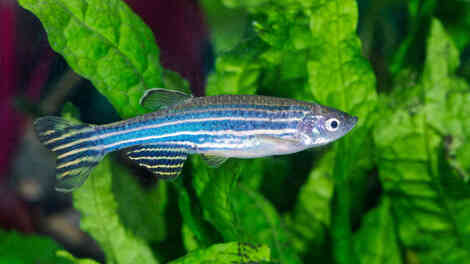
| Attributes | Quick facts |
|---|---|
| Size | 1-2 in (2.5-5 cm). |
| Weight | Lightweight, less than 0.1 oz (2-3 g). |
| Lifespan | 2-5 years in captivity. |
| Habitat | Freshwater rivers and streams in South Asia. |
| Diet | Omnivorous; algae, plankton, and small invertebrates. |
| Social Structure | Shoaling fish, thrives in groups. |
| Conservation | Least Concern. |
Fun fact: They can repair and regenerate various organs including the heart, brain, retina, pancreas, spine, fins, and kidneys.
11. Zebra Moray Eel
Zebra Moray Eel (Gymnomuraena zebra) is a marine creature that inhabits the Indo-Pacific region, including the Red Sea and the Great Barrier Reef off the coast of Australia. It is found at depths up to 164 ft (50 m). This eel is recognized by its alternating pattern of white and black bands running down the length of its body. It has a long, slender body, similar to that of a snake, covered by a smooth coating of skin with no scales. The body is highly muscular, aiding in propulsion through the water. An average individual can reach up to 5 ft (1.5m) long. The average weight for the species is up to 22 lbs (10 kg). As a carnivore, the Zebra Moray Eel feeds on crabs and other crustaceans.
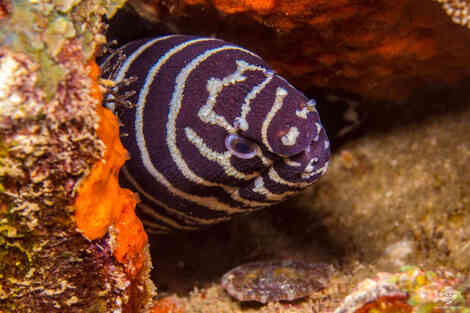
| Attributes | Quick facts |
|---|---|
| Size | Up to 5 ft (1.5 m). |
| Weight | 10-22 lbs (4.5-10 kg). |
| Lifespan | Estimated at 10-20 years. |
| Habitat | Coral reefs and rocky crevices in the Indo-Pacific region. |
| Diet | Carnivorous; primarily crustaceans and mollusks. |
| Social Structure | Solitary. |
| Conservation | Least Concern. |
Fun fact: It has a second jaws, located near the throat. These are used to keep prey once being captured.
12. Zebra Pleco
Zebra Pleco (Hypancistrus zebra) is a small, nocturnal catfish native to the Xingu River in Brazil. It has a striking appearance with alternating stripes of white and black running laterally across its body. The average size of a Zebra Pleco is between 3 and 4 inches when fully grown. This species is known to be shy and passive, often hiding in caves during the day and becoming more active at night. They live in fast-moving, highly oxygenated currents, where the water is soft and has a pH of about 6 to 7 and a temperature of around 82° to 90°F (28° to 32°C).
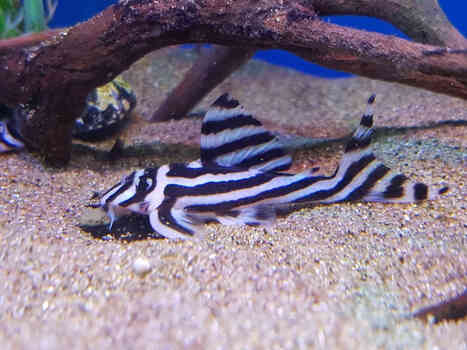
| Attributes | Quick facts |
|---|---|
| Size | 3-4 in (7.6-10 cm). |
| Weight | Less than 1 oz (28 g). |
| Lifespan | 10-15 years in captivity. |
| Habitat | Freshwater rivers in Brazil, particularly the Xingu River. |
| Diet | Omnivorous; algae, small invertebrates, and detritus. |
| Social Structure | Solitary or small groups. |
| Conservation | Critically Endangered due to habitat destruction. |
Fun fact: Zebra Pleco is listed as critically endangered on the IUCN Red List.
13. Zebra Shark
The Zebra Shark is a carpet shark. It lives in the tropical Indo-Pacific. Zebra Sharks swim in shallow waters. They stay near coral reefs and sandy flats. They also like seagrass beds. Their body is rounded and sandy-colored. It has five ridges. They have small mouths. Whisker-like barbels sit near their snout. Their tails are powerful. The tail is almost as long as their body. Adult Zebra Sharks grow to 6.5-8.2 ft (2-2.5 m). They weigh 45-66 lbs (20-30 kg). Zebra Sharks are nocturnal. They rest on the ocean floor during the day. These sharks are usually solitary. Sometimes, they form small groups. They eat crustaceans, small fish, and mollusks.
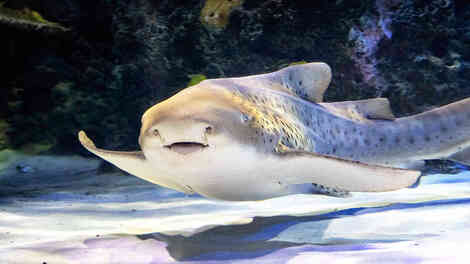
| Attributes | Quick facts |
|---|---|
| Size | 6.5-8.2 ft (2-2.5 m) as adults. |
| Weight | 45-66 lbs (20-30 kg). |
| Lifespan | Up to 25 years. |
| Habitat | Coral reefs and sandy sea bottoms in the Indo-Pacific region. |
| Diet | Carnivorous; small fish, mollusks, and crustaceans. |
| Social Structure | Solitary, occasionally found in groups. |
| Conservation | Endangered due to overfishing and habitat loss. |
Fun fact: They reproduce through parthenogenesis, a process where offspring are produced without fertilization, commonly referred to as virgin births.
After exploring the fascinating aquatic world with fish that start with Z, let’s now take a look at some incredible bird species beginning with the same letter.
Birds starting with letter Z
Explore a fascinating list of birds that begin with the letter ‘Z’, showcasing unique species from around the world.
| Zebra Dove | Zanzibar Red Bishop | Zoe’s Imperial Pigeon | Zebra Finch |
14. Zebra Dove
Zebra Dove (Geopelia striata) is a small bird native to Southeast Asia. This bird is commonly found in dry, open habitats with some scrub vegetation, which it uses for cover. It can also be seen in villages, towns, gardens, parks, and cultivated areas. It is predominantly brownish-grey in color with black-and-white barring. The bird is slender with a long, narrow tail. The Zebra Dove measures 7-9 in (18-23 cm) in length, has a wingspan of 10 in, and weighs between 1.5-3 oz (45-85 g). The Zebra Dove feeds on small grass and weed seeds, and will also eat insects and other small invertebrates.
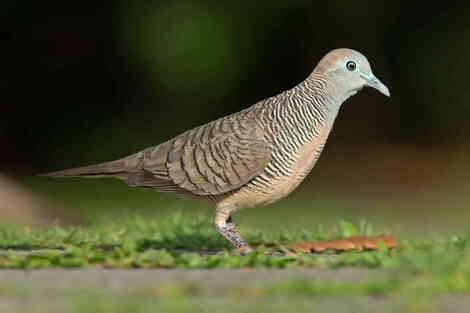
| Attributes | Quick facts |
|---|---|
| Size | 7-9 in (18-23 cm). |
| Weight | 1.5-3 oz (45-85 g). |
| Lifespan | 7-10 years in the wild. |
| Habitat | Grasslands, farmlands, and urban areas in Southeast Asia and the Pacific. |
| Diet | Omnivorous; seeds, grains, and small insects. |
| Social Structure | Typically found in pairs or small groups. |
| Conservation | Least Concern. |
Fun fact: They are highly valued as pets in Thailand and Indonesia due to their pleasant, soft, staccato cooing calls.
15. Zanzibar Red Bishop
Zanzibar Red Bishop (Euplectes nigroventris) is a species of bird found in Kenya, Mozambique, and Tanzania. It is known for its striking appearance, with breeding males displaying completely black underparts and mostly orange-red upperparts. The bird is relatively small, measuring about 5.5-6 in (14-15 cm) in size, and weighs between 0.6-1 oz (17-28 g). The Zanzibar Red Bishop breeds in moist areas including marshes, flooded grassland, and cultivated areas. Non-breeding flocks are found in many open habitats and often mix with other species. The song of this bird is long and rattling, and the typical calls are rough “tek” notes.
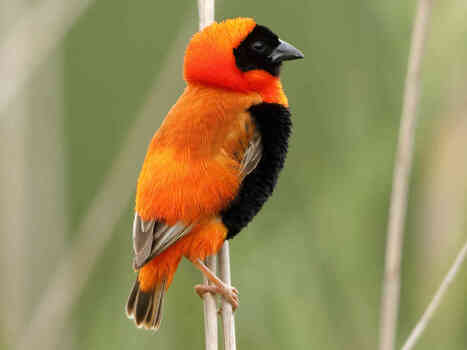
| Attributes | Quick facts |
|---|---|
| Size | 5.5-6 in (14-15 cm). |
| Weight | 0.6-1 oz (17-28 g). |
| Lifespan | 3-5 years in the wild, longer in captivity. |
| Habitat | Wetlands, grasslands, and agricultural fields in East Africa. |
| Diet | Omnivorous; seeds, grains, and small insects. |
| Social Structure | Gregarious; forms large flocks, especially outside breeding season. |
| Conservation | Least Concern. |
Fun fact: The male fluffs up his feathers, spreads his tail, and bows deeply while singing to attract a mate.
16. Zoe’s Imperial Pigeon
Zoe’s Imperial Pigeon (Ducula zoeae) is a species of bird in the Columbidae family. It is found in New Guinea. Its natural habitats are subtropical or tropical moist lowland forests, subtropical or tropical mangrove forests, and subtropical or tropical moist montane forests. The pigeon has a pale gray head, yellow eyes, and a short green tail. The pigeon has a grey-blue head with a pink neck, upper chest, and upper back. The black chest line borders a grey-blue belly. It has chestnut brown wings tipped with dark green and a dark iridescent green tail. The pigeon is large, with a size of 15-16 in (38-41 cm). It weighs between12-18 oz (340-510 g).
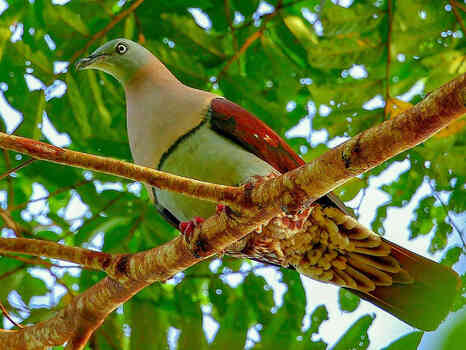
| Attributes | Quick facts |
|---|---|
| Size | 15-16 in (38-41 cm). |
| Weight | 12-18 oz (340-510 g). |
| Lifespan | 10-15 years. |
| Habitat | Tropical forests in Southeast Asia. |
| Diet | Frugivorous; eats fruits, berries, and seeds. |
| Social Structure | Solitary or in pairs. |
| Conservation | Least Concern but affected by habitat destruction. |
Fun fact: It is named after Zoë Lesson, the wife of French ornithologist René-Primevère Lesson, who first described it.
17. Zebra Finch
Zebra Finch (Taeniopygia guttata) is a small bird native to Australia, Indonesia, and East Timor. It is typically found in grasslands, woodlands, and desert regions. The bird is soft gray, with red eyes, small black lines running straight down under each eye, and bright orange legs and beaks. They have a length of about 4 inches and weigh less than a half-ounce on average. Zebra Finches are diurnal, active predominantly during the day.
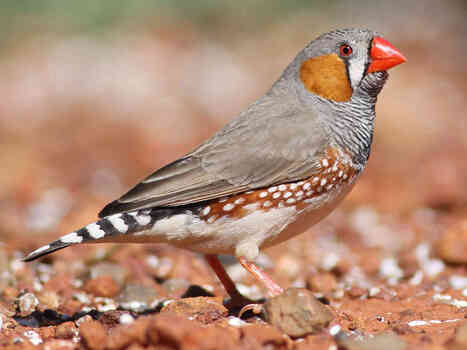
| Attributes | Quick facts |
|---|---|
| Size | 4-5 in (10-13 cm). |
| Weight | 0.4-0.5 oz (12-15 g). |
| Lifespan | 5-9 years. |
| Habitat | Grasslands and savannas in Australia. |
| Diet | Granivorous; seeds, with occasional small insects. |
| Social Structure | Highly social; forms large flocks. |
| Conservation | Least Concern. |
Fun fact: They are among the quickest maturing bird species – reproduce at a mere 2-3 months old.
Finally, there are more uncategoried creatures starting with the letter Z, which will be elaborating in the next part.
Other animals that start with Z
Beside the previous categories, here are other fascinating animals starting with the letter Z.
| Zebra Swallowtail Butterfly | Zebra Snake | Zimmerman’s Poison Frog | Zonate sea hare | Zigzag Salamander |
| Zenith coral | Zebra Spider | Zigzag scallop | Zebra Mussels |
18. Zebra Swallowtail Butterfly
The Zebra Swallowtail Butterfly lives in North America. It stays near the ‘Pawpaw’ tree. This tree is its host plant. The butterfly’s wingspan is 2.5 to 4.1 inches (6.4 to 10.4 cm). Its wings are triangular. They have two sword-like tails on the hind wings. The wings are white or greenish-white. Black stripes run up and down. The rear wings have two blue spots. These spots sit at the inner corner. A red mark is near the abdomen. The Zebra Swallowtail Butterfly changes with the seasons. In spring, it is smaller and whiter. Its tails are short. In summer, it grows larger. The black stripes get wider. The tails become longer.
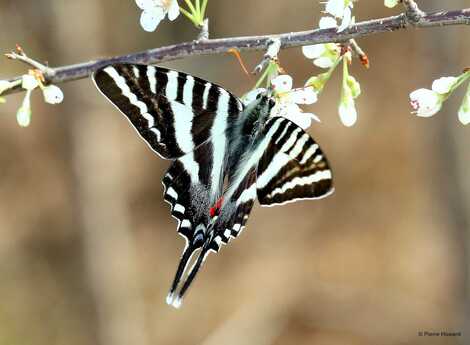
| Attributes | Quick facts |
|---|---|
| Size | Wingspan 2.5-4 in (6.4-10 cm). |
| Weight | Very lightweight (a few grams). |
| Lifespan | 6-14 days as an adult butterfly. |
| Habitat | Deciduous forests, meadows, and near pawpaw trees in North America. |
| Diet | Nectar from flowers; caterpillars feed on pawpaw leaves. |
| Social Structure | Solitary. |
| Conservation | Least Concern. |
Fun fact: When faced with danger, they perform a unique ‘dance’. This confuses predators and allows the butterflies to make a quick escape.
19. Zebra Snake
Zebra Snake (Naja nigricincta) is a species of spitting cobra native to several southern countries of Africa. This species is usually found hiding during the day in crevices or caves in the reef. It is characterized by its distinctive black and white stripes. The average size of a Zebra Snake is between 3-6 feet (1-1.5 m) long. The Zebra Snake is nocturnal and can swim. It is an ambush predator that spends most of its time in shallow waters near coral reefs waiting for its prey to approach. It employs the art of camouflage as a defense mechanism against predators like bigger sharks or whales.
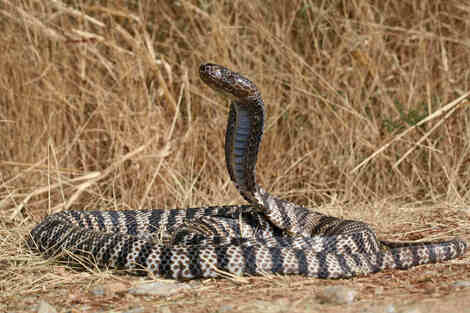
| Attributes | Quick facts |
|---|---|
| Size | 3-6 ft (1-1.5 m). |
| Weight | Up to 1 lb (0.45 kg). |
| Lifespan | 8-12 years in the wild. |
| Habitat | Grasslands, savannas, and rocky areas in southern Africa. |
| Diet | Carnivorous; small mammals, birds, and reptiles. |
| Social Structure | Solitary. |
| Conservation | Least Concern. |
Fun fact: Zebra Snake is quite timid. It prefers to avoid confrontation and will often retreat when faced with danger.
20. Zimmerman’s Poison Frog
Zimmerman’s Poison Frog (Ranitomeya variabilis) is a small species of poison dart frog that is endemic to Peru. This frog is usually found in the canopy of the Amazon Jungle, and also in mountainous and hilly areas at altitudes of about 10-40 ft (300-1,200 meters) above sea level. It has a bright yellow body with deep blue limbs, and black spots or stripes across the ventral side of the body. The length of males averages about 0.68 in (17.4 mm), while females average 0.7 in (18 mm). It has a toxic skin alkaloid which repels potential predators.
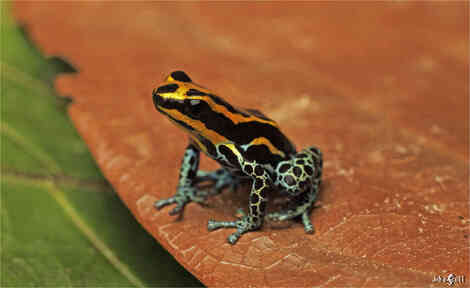
| Attributes | Quick facts |
|---|---|
| Size | 0.8-1.2 in (2-3 cm). |
| Weight | Less than 0.1 oz (2-3 g). |
| Lifespan | 5-8 years in the wild. |
| Habitat | Rainforests of South America. |
| Diet | Insectivorous; ants, termites, and other small invertebrates. |
| Social Structure | Solitary, except during mating. |
| Conservation | Least Concern, though habitat loss poses threats. |
Fun fact: They can mimic the appearance of two other species by altering its colors and patterns.
21. Zonate Sea Hare
Zonate Sea Hare (Aplysia fasciata) is a marine gastropod mollusk. It resides in shallow waters, often found on seaweed. This animal is characterized by a soft body with an internal shell made of protein. The foot has lateral projections, known as parapodia. The color of this creature is often black or a very dark brown, sometimes with a thin red border to the parapodia, foot, and tentacles. Many also have mottled spots that span across their body. The size of this species can reach up to 12 in (30 cm) in length, and it can weigh up to 1 lb (0.45 kg). The Zonate Sea Hare is herbivorous, feeding on large seaweeds. It is known for its graceful swimming, often flapping its parapodia.
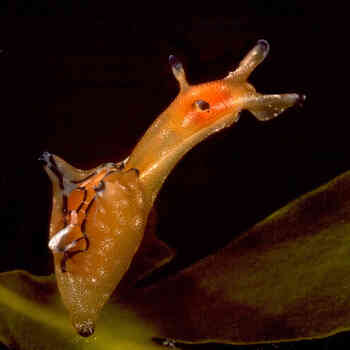
| Attributes | Quick facts |
|---|---|
| Size | Up to 12 in (30 cm) in length. |
| Weight | Lightweight; around 1 lb (0.45 kg). |
| Lifespan | Approximately 1 year. |
| Habitat | Shallow coastal waters and seagrass beds. |
| Diet | Herbivorous; primarily algae. |
| Social Structure | Often found in groups during mating season. |
| Conservation | Least Concern. |
Fun fact: Due to its simple nervous system, it has been extensively studied, providing valuable insights for neuroscientists.
22. Zigzag Salamander
Zigzag Salamander (Plethodon dorsalis) is commonly found in moist habitats, rocky areas, and seasonally around caves and rocky springs. This is a small, dark-colored salamander measuring between 2-4 in (5-10 cm) in length. It has a red or orangish wavy pattern, often referred to as a “zigzag”, extending from the neck down the back to the base of the tail. They prefer the cooler, moist conditions found deeper in the soil during warmer seasons. The Zigzag Salamander is nocturnal and breeds in fall, with eggs deposited under rocks or in rock crevices.
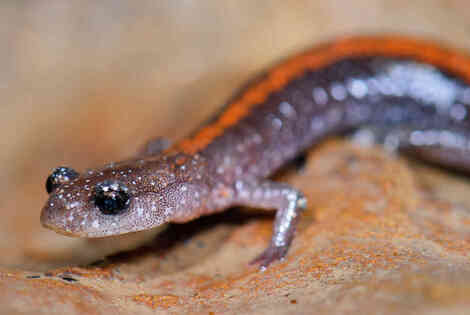
| Attributes | Quick facts |
|---|---|
| Size | 2-4 in (5-10 cm). |
| Weight | Less than 0.5 oz (14 g). |
| Lifespan | 10-15 years. |
| Habitat | Moist woodlands, under logs and rocks in North America. |
| Diet | Carnivorous; small insects, worms, and spiders. |
| Social Structure | Solitary, except during breeding. |
| Conservation | Least Concern. |
Fun fact: They can detect the scent markers that certain animals leave in their environment, triggering defensive behaviors to deter these threats.
23. Zenith Coral
Zenith coral (Lobophyllia hemprichii) is a vibrant species often found in reef tanks. It exhibits a colonial growth form, with three common types: massive or mat, connected, and individual or solo. The massive or mat colonies, generally belonging to the Palythoa genus, are identified by a very thick mat, called a coenchyme or mesoglea. The Zenith coral is known for its brilliant, fluorescent colors. It thrives in tropical water temperatures (about 78F/25.5C), normal ocean salinity (somewhere around 1.025 specific gravity), normal hardness (8-12 dKH), and a pH of around 8.0-8.4.
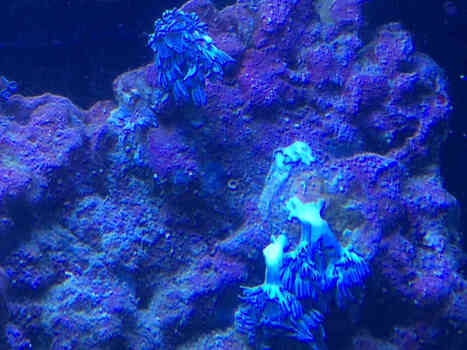
| Attributes | Quick facts |
|---|---|
| Size | Colony size varies; individual polyps are tiny (0.1-0.2 in). |
| Weight | Varies; colonies are lightweight. |
| Lifespan | Can live for hundreds of years. |
| Habitat | Tropical and subtropical reefs. |
| Diet | Filter-feeds on plankton and relies on symbiotic algae. |
| Social Structure | Colonial; forms reefs with interconnected polyps. |
| Conservation | Threatened by climate change and coral bleaching. |
Fun fact: They can naturally produce fluorescent pigments that can appear in a wide array of colors.
24. Zebra Spider
The Zebra Spider is a jumping spider. It lives in the Northern Hemisphere. This spider is small. Males are 0.2 in (6 mm). Females reach 0.4 in (10 mm). Its body is black. It has shiny white stripes. You can spot Zebra Spiders on fences and walls. They also like window sills. They live in meadows, gardens, and forests. The Zebra Spider lives alone. It does not make webs. This spider is active in the daytime. It hunts insects. It eats mosquitoes and flies. These can be bigger than itself. Zebra Spiders mate in spring and early summer. They breed once a year. Males do a dance before mating. They wave their front legs. They move their abdomen up and down.
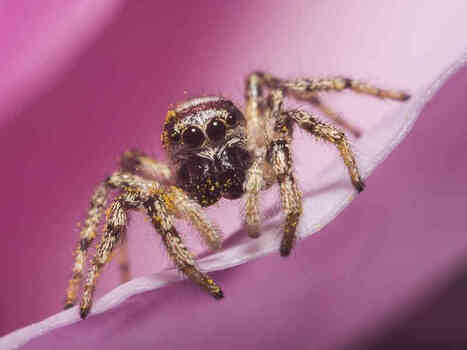
| Attributes | Quick facts |
|---|---|
| Size | 0.2-0.4 in (5-10 mm). |
| Weight | Negligible; a few milligrams. |
| Lifespan | Up to 1 year. |
| Habitat | Gardens, woodlands, and urban areas worldwide. |
| Diet | Carnivorous; small insects. |
| Social Structure | Solitary. |
| Conservation | Least Concern. |
Fun fact: They utilize visual, olfactory, and chemical signals, as well as vibrations, to interact with each other.
25. Zigzag Scallop
Zigzag Scallop (Euvola ziczac) is a bivalve mollusk found in the tropical and subtropical western Atlantic, including offshore along the coast of Southwest Florida. The shell of the Zigzag Scallop is circular, with the lower valve strongly concave and the upper valve flatter, slightly convex. The valves are remarkably different in color; the top, flat valve usually displays a pattern of brown or reddish-brown radial bands and zigzag lines, while the lower, concave valve is usually an even very light-brown or cream-white. The Zigzag Scallop typically weighs around 0.04-0.15 lbs (20-70 grams).
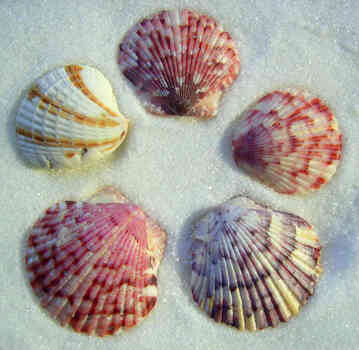
| Attributes | Quick facts |
|---|---|
| Size | Shell diameter up to 3 in (7.5 cm). |
| Weight | Lightweight, around 0.04-0.15 lbs (20-70 grams). |
| Lifespan | 5-10 years. |
| Habitat | Coastal and estuarine waters, sandy or muddy seabeds. |
| Diet | Filter-feeds on plankton. |
| Social Structure | Lives in groups or colonies. |
| Conservation | Least Concern. |
Fun fact: They conceal themselves with sediment, leaving only their tentacles exposed above the sediment.
26. Zebra Mussels
Zebra Mussels (Dreissena polymorpha) are small freshwater mollusks. They are native to the lakes of southern Russia and Ukraine but have been accidentally introduced to numerous other areas, becoming an invasive species in many countries worldwide. Their shells are D-shaped, usually about the size of a fingernail, but can grow to a maximum length of around 2 in (50 mm) and about 0.5 inches (1.3 cm) in width. They have alternating yellow and brownish-colored stripes. Zebra mussels live in still or slow-moving freshwater, attaching themselves to any hard surface underwater. They are filter-feeding organisms, removing particles from the water column. They process up to one liter of water per day, per mussel.
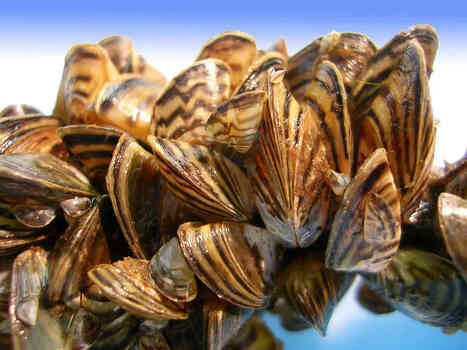
| Attributes | Quick facts |
|---|---|
| Size | 0.5-2 in (1-5 cm). |
| Weight | Lightweight; depends on shell size. |
| Lifespan | 4-5 years. |
| Habitat | Freshwater lakes, rivers, and reservoirs in Europe and North America. |
| Diet | Filter-feeds on algae and plankton. |
| Social Structure | Cluster in dense colonies. |
| Conservation | Invasive species causing ecological damage. |
Fun fact: They produce byssal threads, a type of adhesive fiber, that allows them to cling onto solid surfaces underwater.
FAQs
What are Big Animals that Start With Z?
Here are the 5 big animals beginning with the letter Z: Zebra, Zebu, Zebra Shark, Zebra Moray Eel, and Zambezi Flapshell Turtle.
- Zebra (Equus spp): It is a native inhabitant of Africa’s plains and mountains. It has a distinctive black and white striped coat, and its skin underneath is black. Zebras typically stand about 120–140 cm (47–55 inches). A female zebra weighs between 400 and 600 pounds, while a male can weigh up to 900 pounds. They have large ears, small hooves, and muscular legs. Zebras are built for speed and long-distance migrations.
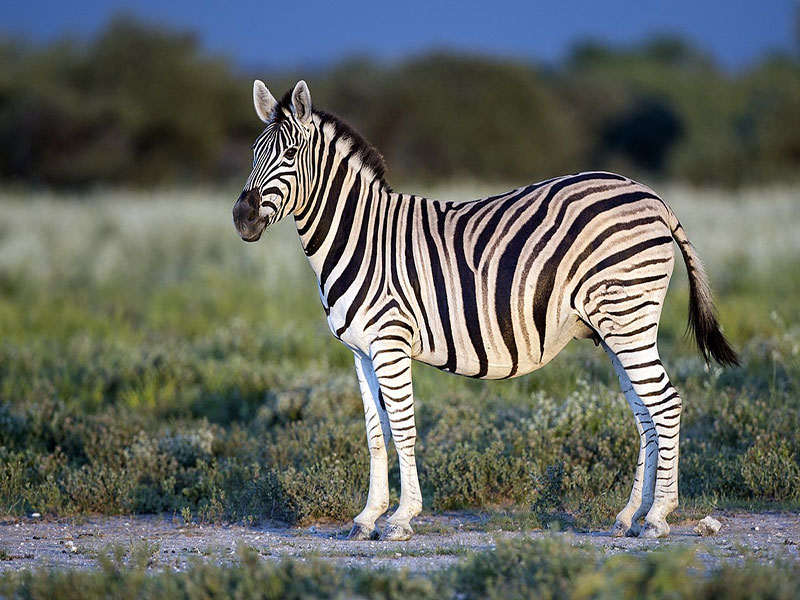
- Zebu (Bos taurus indicus): It is a breed of domestic cow from Asia. They are usually gray or red and have horns and loose skin. They are characterized by a large hump on their shoulders, and a long flap of skin, known as a “dewlap,” on their chest. Zebu cattle stand up to 3.5 ft. tall at the shoulder and weigh up to 600 lbs. Their habitats are primarily tropical forests, jungles, wetlands, and swamps. They also live in open grasslands, meadows, and plains.
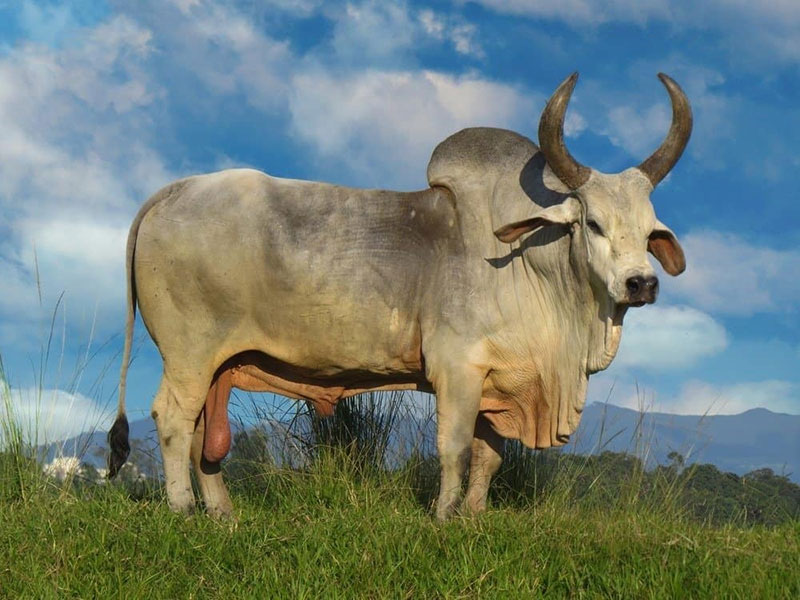
- Zebra Shark (Stegostoma tigrinum): It is a species of carpet shark found throughout the tropical Indo-Pacific. It frequents coral reefs and sandy flats, often near the shoreline. The shark has a rounded, sandy-colored body with five ridges, small mouths, whisker-like organs called barbels in front of their snout, and powerful tails that can be nearly as long as the rest of their bodies. Adults usually grow up to 9 feet long and weigh between 45 to 65 pounds.
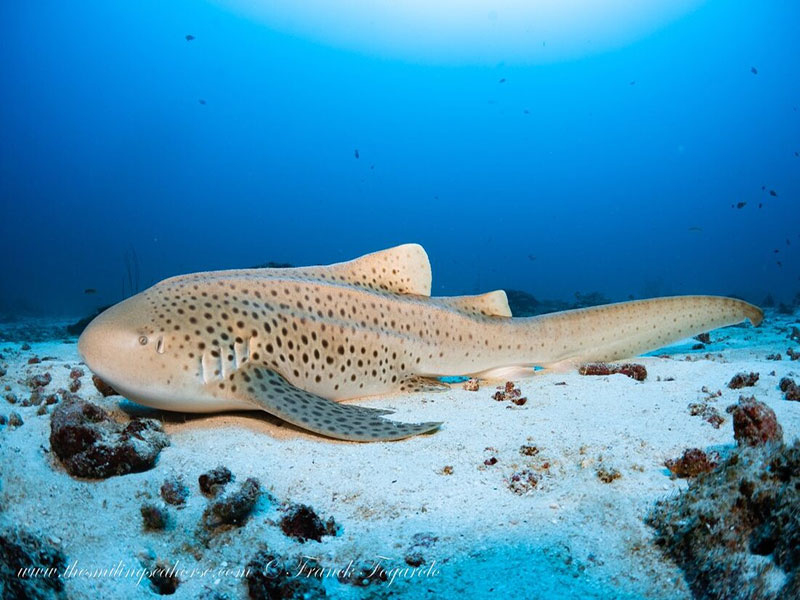
- Zebra Moray Eel (Gymnomuraena zebra): It is a marine creature that inhabits the Indo-Pacific region, including the Red Sea and the Great Barrier Reef off the coast of Australia. It has a long, slender body similar to a snake, covered by a smooth coating of skin with no scales. The body is highly muscular, helping it move through the water. The eel is named for its alternating pattern of white and black bands. It can reach a maximum length of 5 feet. The average weight for the species is up to 10 kg.
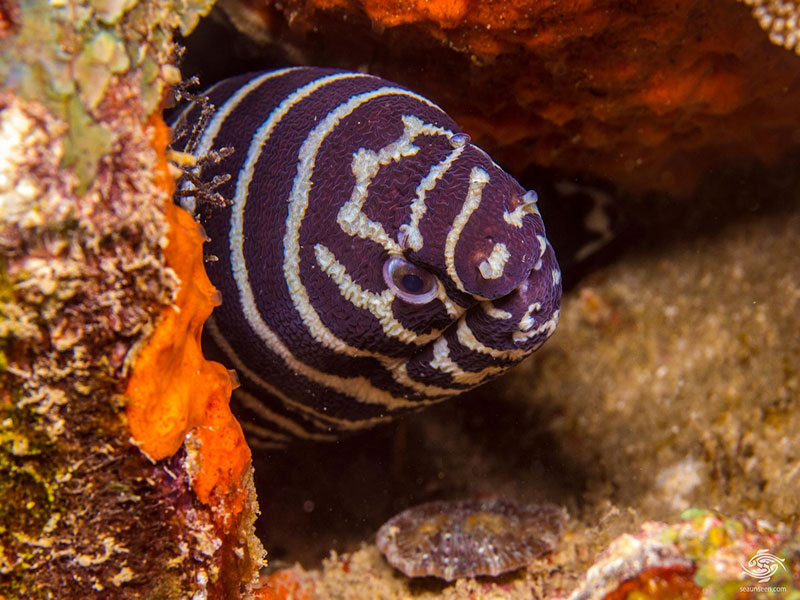
- Zambezi Flapshell (Cycloderma frenatum): It is a large turtle native to Southeast Africa. It is found in countries such as Malawi, Mozambique, Tanzania, Zambia, and Zimbabwe, primarily in the Zambezi basin. This species has green to brown skin adorned with dotted markings. It reaches an adult size of approximately 56 cm (22 in) and a weight of 14 kg (31 lbs).
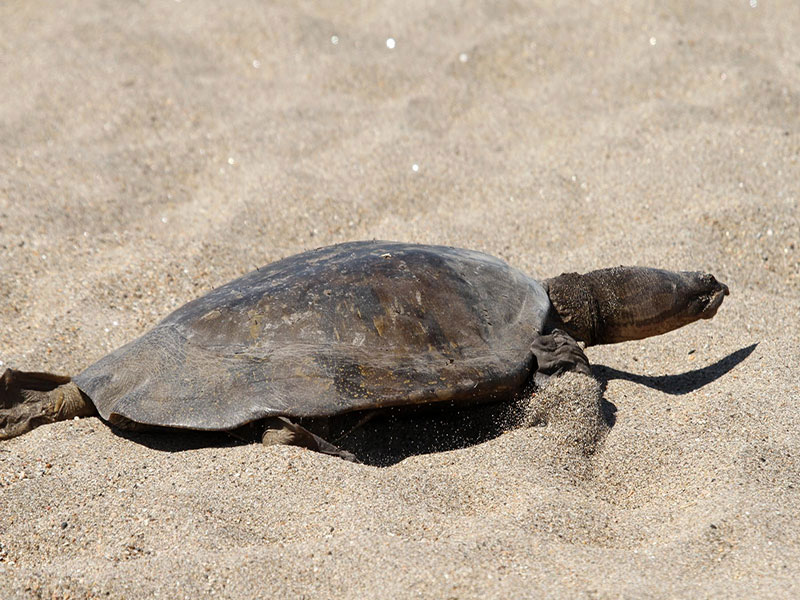
What are Small Animals that Start With Z?
Here are the 5 small animals beginning with the letter Z: Zebra Finch, Zebrafish, Zigzag Salamander, Zebra Spider, and Zimmerman’s Poison Frog.
- Zebra Finch (Taeniopygia guttata): It is a small bird native to the arid regions of Australia, Indonesia, and East Timor. It has a soft gray color, with red eyes, small black lines running straight down under each eye, and bright orange legs and beaks. Males have black “mustache” markings, thin black lines running along both sides of their beaks. The average size of a Zebra Finch is about 4 inches (10 cm) in length, and it weighs approximately 11 grams.
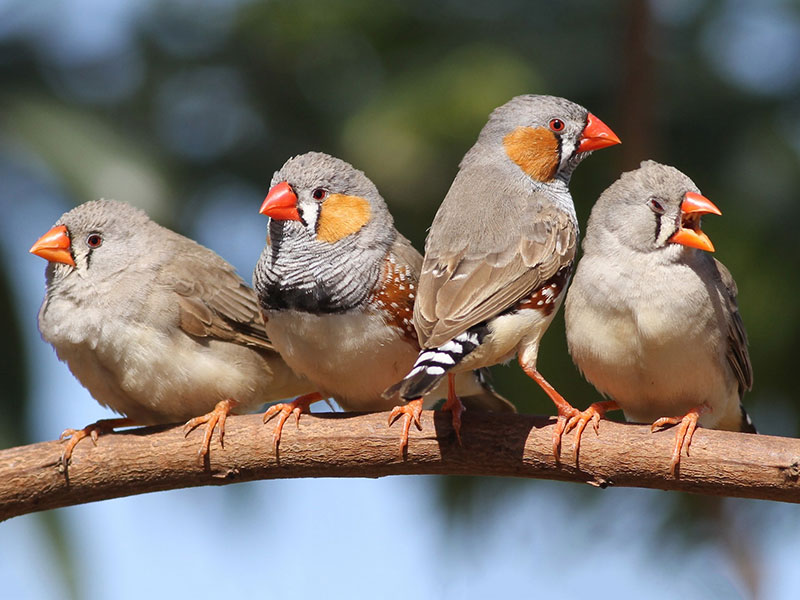
- Zebrafish (Danio rerio): It is a freshwater fish native to South Asia. It inhabits moderately flowing stagnant clear water of shallow depth in streams, canals, ditches, oxbow lakes, ponds, and rice paddies. The fish has silver-colored scales and five horizontal blue stripes on its body. In the wild, these fish measure about an inch long on average. However, the longest Zebrafish in recorded history grew to 6.4 centimeters or about 2.5 inches.
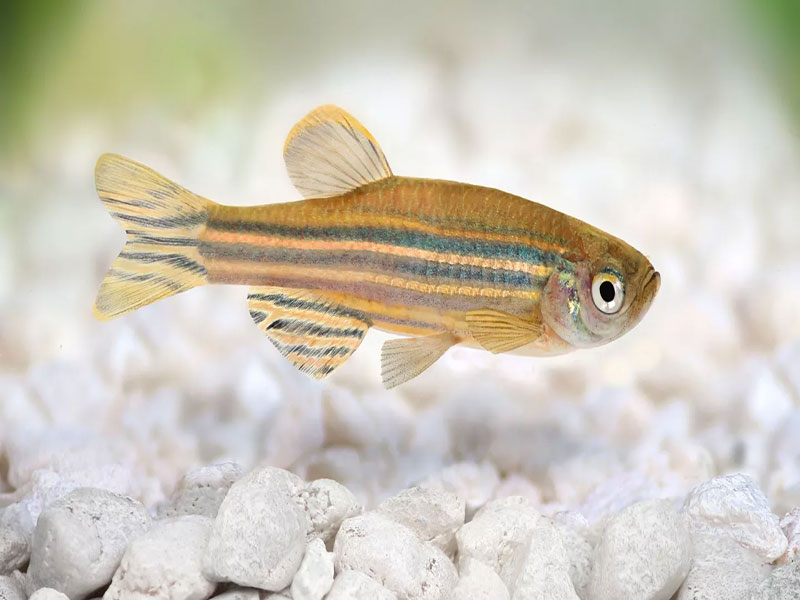
- Zigzag Salamander (Plethodon dorsalis): It is a small, dark-colored salamander measuring between 2.5 to 3.5 inches in length. It has a red or orangish wavy pattern, or “zigzag”, extending from the neck down the back to the base of the tail. This species is found in moist habitats, rocky areas, and seasonally around caves and rocky springs. It prefers the cooler, moist environment found deeper in the soil during the warmer seasons.
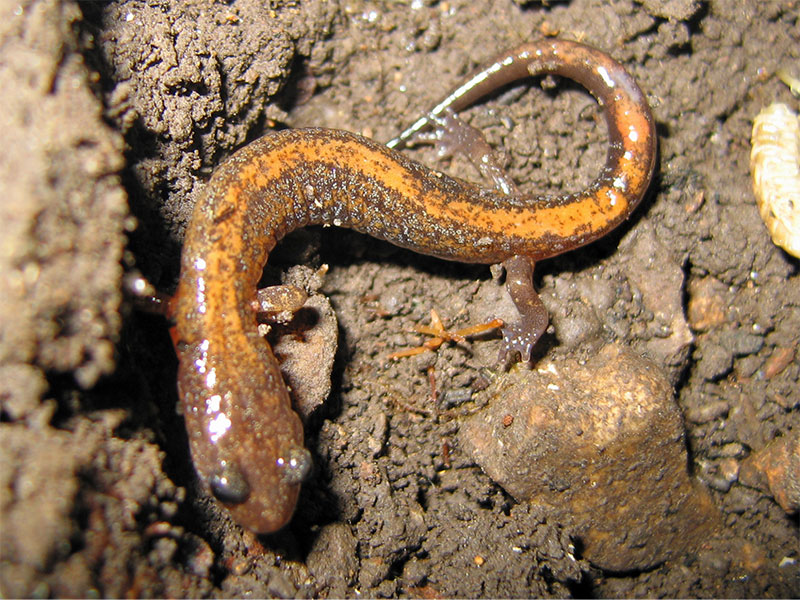
- Zebra Spider (Salticus scenicus): It is a small jumping spider with a distinctive black and white striped body. Males measure 5-6 millimeters, while females are slightly larger, ranging from 5-9 millimeters. These spiders are common throughout Europe, North America, and northern Asia. They live near human populations, often seen on fences, walls, and window sills, and also inhabit meadows, gardens, and forests.
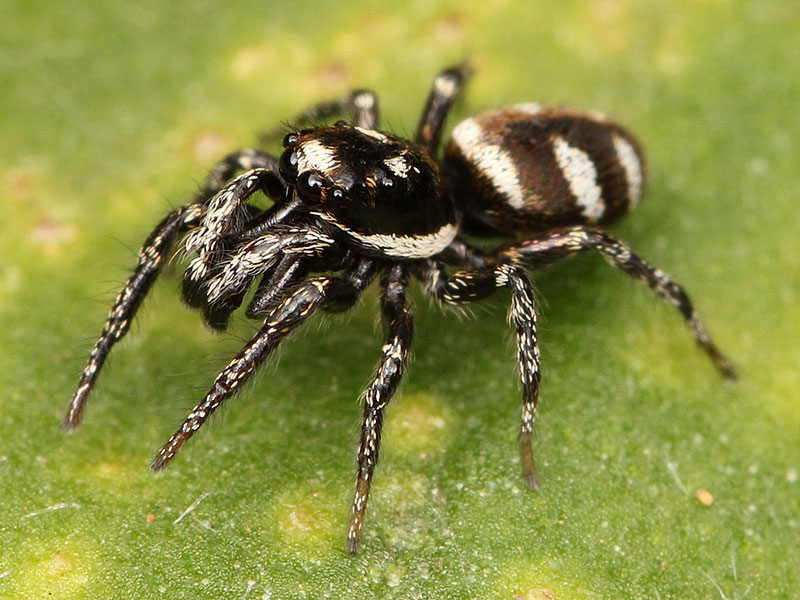
- Zimmerman’s Poison Frog (Ranitomeya variabilis): It is a small species of poison dart frog that is endemic to Peru. It is an arboreal species, found in the canopy of the Amazon Jungle. It is also found in mountainous and hilly areas at an altitude of about 300-1,200 meters above sea level. The frog usually has a bright yellow body with deep blue limbs, and black spots or stripes across the ventral side of the body. The average size of this frog is about 1.6 cm (0.6 in) and it weighs around 1.35 grams.
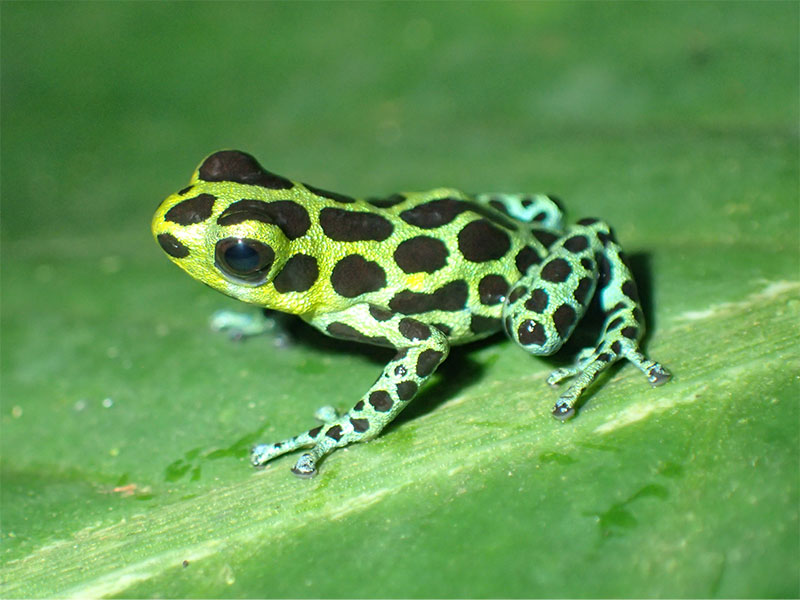
What are Dangerous Animals that Start With Z?
Here are the 5 dangerous animals beginning with the letter Z: Zebra Lionfish, Zebra Tarantula, Zebra Swallowtail Butterfly, Zebra Snake, and Zone-Tailed Hawk.
- Zebra Lionfish (Dendrochirus zebra): It is a marine fish species that belongs to the Scorpaenidae family. It is native to the Indo-Pacific region, including the Red Sea, and is often found near coral reefs and rocky crevices. The fish has a distinctive black-and-white striped pattern, similar to that of a zebra. Its venomous spines, located on their dorsal, anal, and pelvic fins, contain venom used for self-defense. An adult Zebra Lionfish can grow up to a maximum length of approximately 18 inches and weigh about 2.5 pounds.
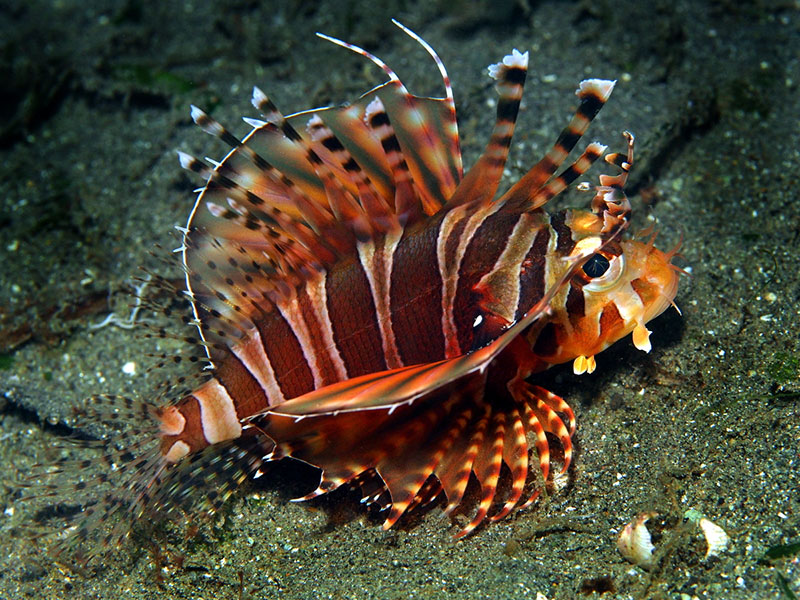
- Zebra Tarantula (Aphonopelma seemanni): It is a medium-sized spider native to Central America, specifically Costa Rica, Honduras, and Nicaragua. It is known for its distinctive black body with vertical white stripes on its legs. The spider has a leg span of 10 – 13 cm. It lives in scrublands and dry forests, and it is accustomed to hot temperatures. This spider is a burrower and can stay hidden in its burrow for months. It is a nocturnal creature, living a solitary lifestyle.
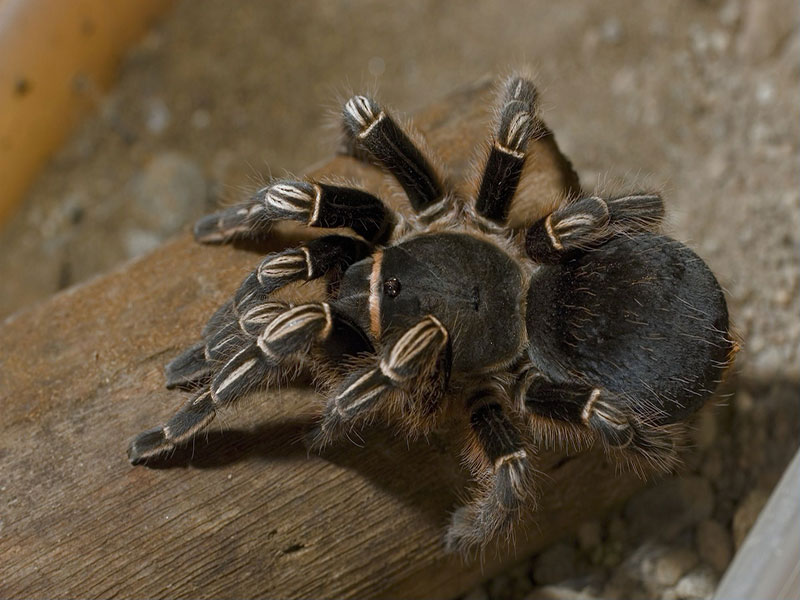
- Zebra Swallowtail Butterfly (Eurytides marcellus): It is native to North America, particularly the Eastern United States and Southeast Canada. It thrives in moist, low woodlands near rivers swamps, and open fields. The butterfly’s wings are triangular, with black stripes on a greenish-white base. It has a wingspan ranging from 2.5 to 4 inches (6.4 to 10.2 cm). The hindwings feature a red stripe along with blue spots near the tails.
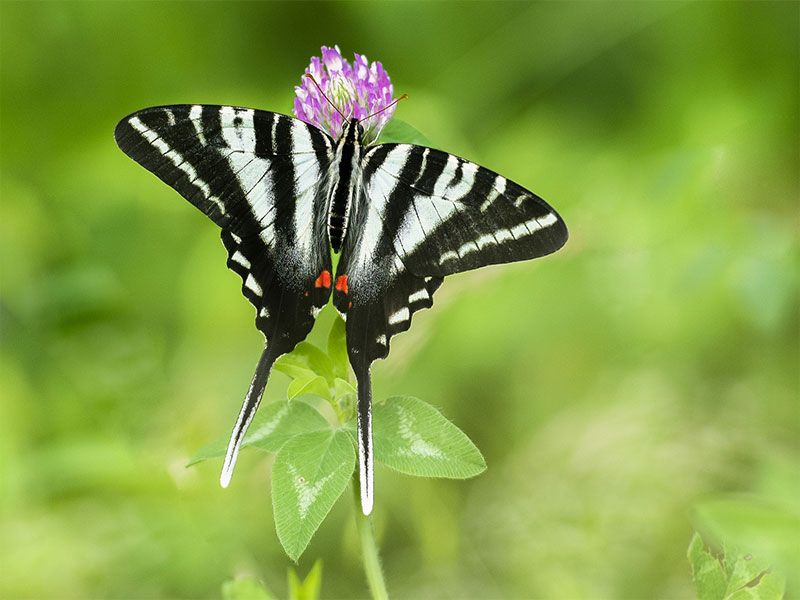
- Zebra Snake (Naja nigricincta): It is a species of spitting cobra native to several southern countries of Africa. It is characterized by its distinctive black and white stripes. The average size of a Zebra Snake is between 3-6 feet long. It is indigenous to Africa and can be located in central parts of Namibia, Angola, and Western and Northern Cape provinces of South Africa, living in habitats such as rocky, shrubland, and savanna areas.
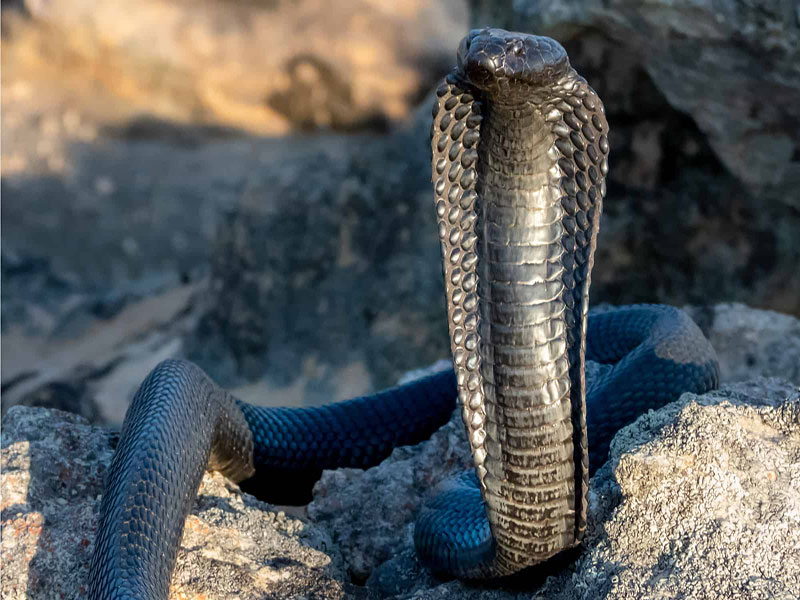
- Zone-tailed Hawk (Buteo albonotatus) is a medium-sized hawk found in warm, dry parts of the Americas. It inhabits a range of habitats, from desert scrublands and open woodlands to river valleys and mountainous regions. This hawk is sleek and blackish, with an underbelly featuring bold black and white bars. Adult birds are 46 to 56 cm in length, with a wingspan of about 117–140 cm. The body mass can range from 565 to 1,080 g, with females being heavier than males.
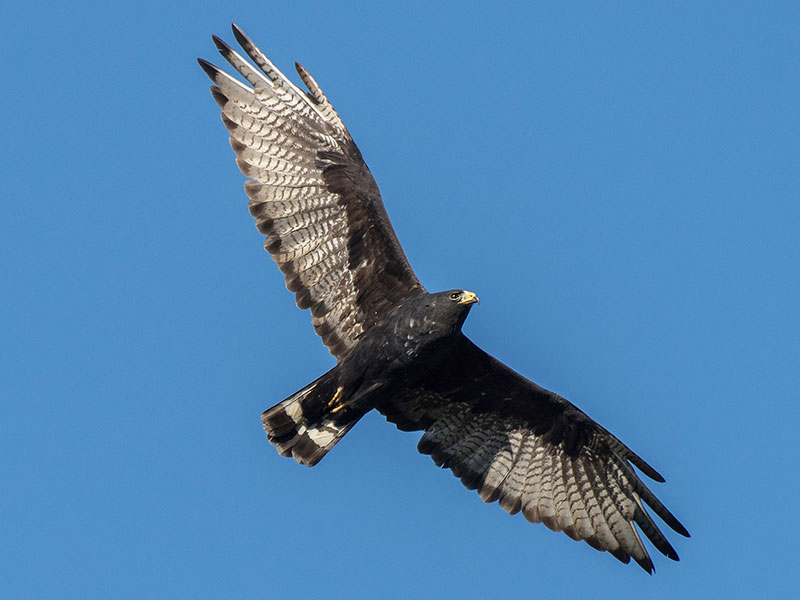
What are Fast Animals that Start With Z?
Here are the 5 fast animals beginning with the letter Z: Zebra Dove, Zebra Duiker, Zorse, Zonkey, and Zapata Wren.
- Zebra Dove (Geopelia striata): It is native to Southeast Asia. It is commonly found in dry, open habitats with some scrub vegetation, often seen in villages, towns, gardens, parks, and cultivated areas. The bird is small and slender, with a long, narrow tail. Its upperparts are brownish-grey with black-and-white barring, and the underparts are pinkish with black bars on the sides of the neck, breast, and belly. The Zebra Dove measures 20-23 cm in length, has a wingspan of 24-26 cm, and weighs between 50 and 72 grams.
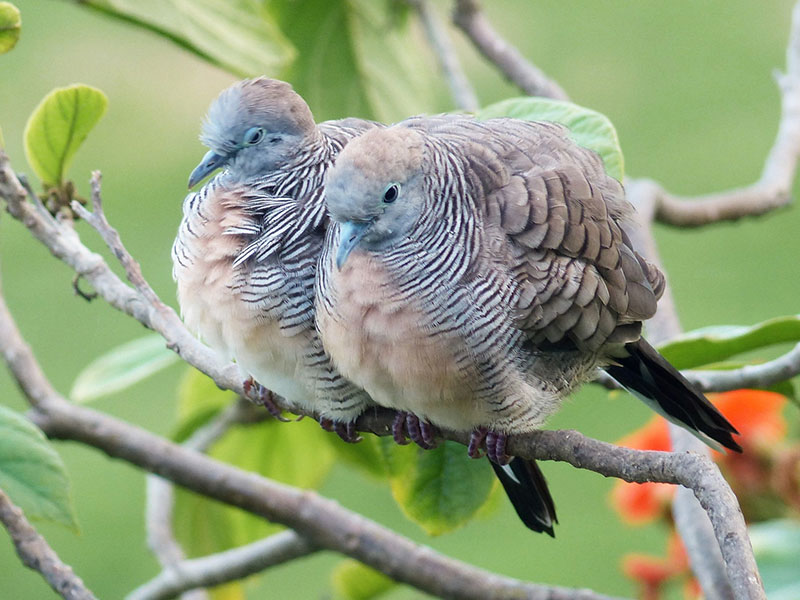
- Zebra Duiker (Cephalophus zebra): It is a small antelope primarily found in Liberia, Ivory Coast, Sierra Leone, and occasionally Guinea. It resides in lowland primary rainforests, especially by clearings and along forest margins. The Zebra Duiker has a gold or red-brown coat with 12-16 distinctive zebra-like stripes, dark markings on their upper legs, and russet faces. An adult can grow to 90 cm in length, 45 cm in height, and weighs between 15-20 kg. Their horns are short and round with sharp pointed tips, about 4.5 – 5.0 cm long in males, and half that in females.
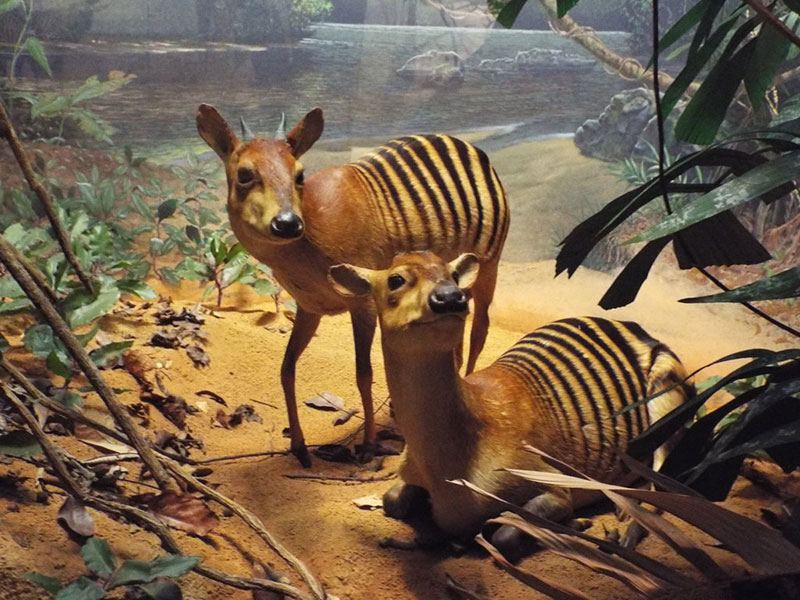
- Zorse (Equus zebra x Equus caballus): It is a hybrid of a zebra and a horse. They are typically found in Africa and Asia, inhabiting both grasslands and forests. Zorses are larger than zebras, with wider bodies and longer legs. Their coat, which ranges from tan to black, features distinctive zebra stripes. They are strong and fast, capable of reaching speeds of up to 40 miles per hour. Zorses measure between 51 to 64 inches in height and weigh between 507 to 1,000 pounds.
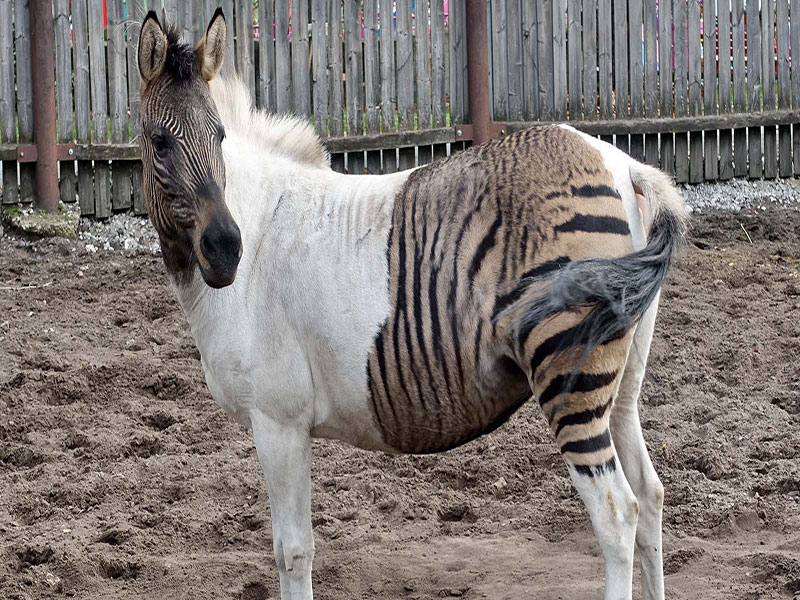
- Zonkey: It is a hybrid of a zebra and a donkey, and is found in savannas and open woodlands. They have a typical small horse shape, with tan, brown, or gray coloration, and darker stripes most prominent on their lighter body parts and legs. Their head and ears are large, resembling a donkey more than a zebra. Zonkeys can reach a height of 3.5 to 5 feet and weigh between 500 to 700 pounds.
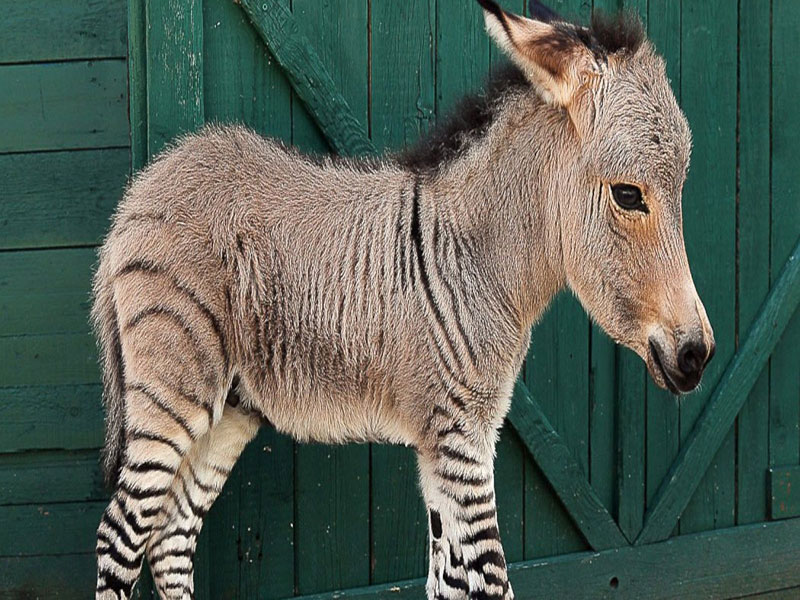
- Zapata Wren (Ferminia cerverai): It is a medium-sized bird measuring about 16 centimeters in length. It has a brown overall appearance, striped with black, and grayish underparts. This bird is endemic to the Zapata Peninsula of southern Cuba. Its habitat is typically freshwater marsh and lowland savanna with scattered bushes and low trees. The bird’s song is high-pitched and loud, described as a musical warble preceded by a guttural note.
What are Ugly Animals that Start With Z?
Here are the 5 ugly animals beginning with the letter Z: Zabrotes Bean Weevil, Zhang’s Horned Toad, Zelus Assassin Bug, Zoraptera, and Zigzag Lacewing.
- Zabrotes Bean Weevil (Zabrotes subfasciatus): It is a species of leaf beetle found in various regions including Africa, North America, South America, Southern Asia, and Europe. It is one of the main pests of the common bean (Phaseolus vulgaris) that affect seeds during storage.
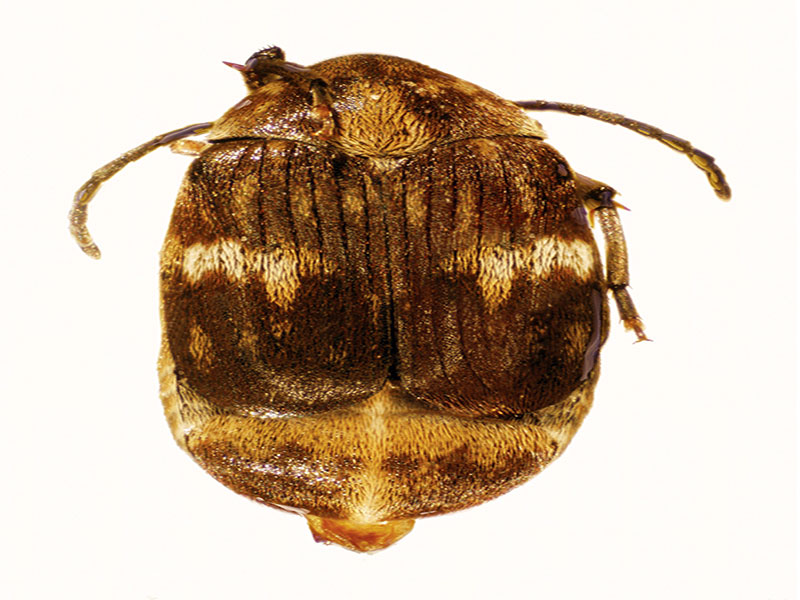
- Zhang’s Horned Toad (Xenophrys zhangi): This species of frog is found in Zhangmu, Nyalam County, Tibet, China, just across the border from Kodari, Nepal.
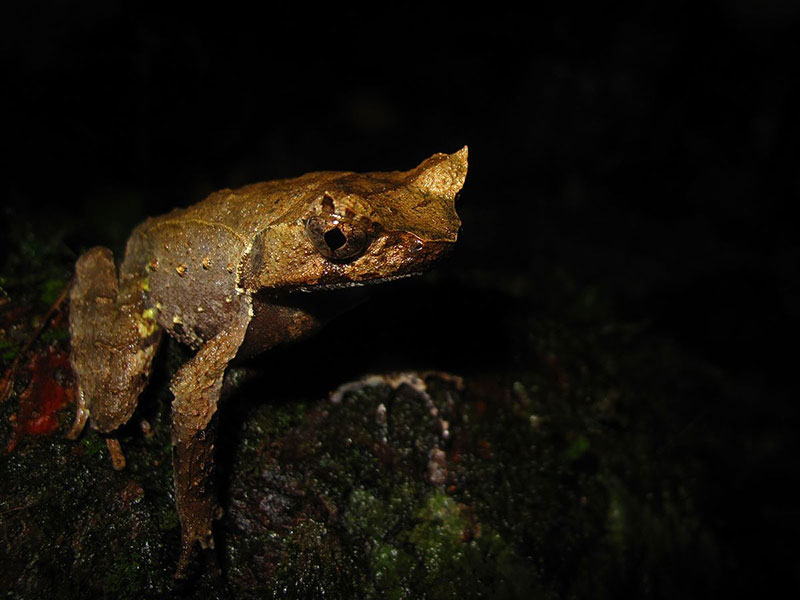
- Zelus Assassin Bug (Zelus longipes Linnaeus): It is a species native to North America, and is commonly found in various climatic zones, including tropical, dry, semi-arid, arid, and Mediterranean climates. It can also adapt well to urban and disturbed areas. This bug has a pear-shaped head, constricted neck, and long hairy legs. Its size ranges from 12.5 to 18 millimeters long. The color of this insect varies from brownish-red to brownish-black.
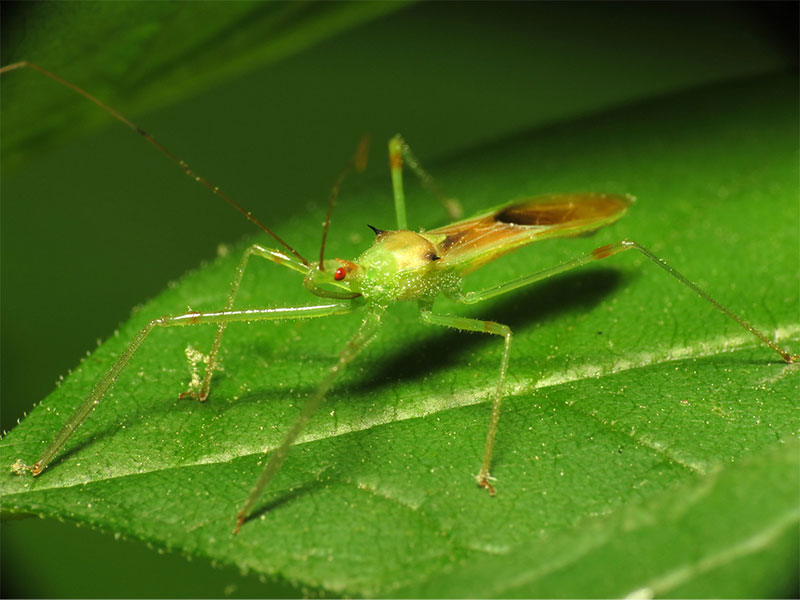
- Zoraptera (Zorotypus): They are small creatures typically less than 4mm in size. They have two forms: winged and wingless. The winged ones can shed their wings, are darker, and have eyes. The wingless ones are pale and blind. They have a nine-segmented antenna. Zoraptera are found in colonies beneath the bark of rotting trees and humus.
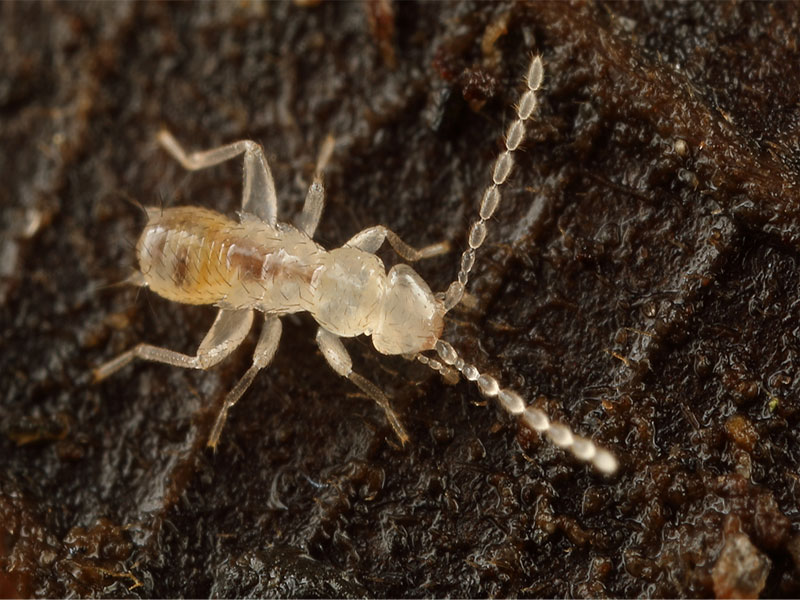
- Zigzag Lacewing: It is a member of the Neuroptera orde. Its soft and fragile body can be black or dark yellow, turning greyish-brown in colder months. It has large, bulging eyes, and its wings are clear with numerous cross-veins forming many cells. The Lacewing thrives in habitats rich in nectar-producing plants and fruits. It’s also found in gardens, often underneath plant leaves, on trees, or in compost heaps.
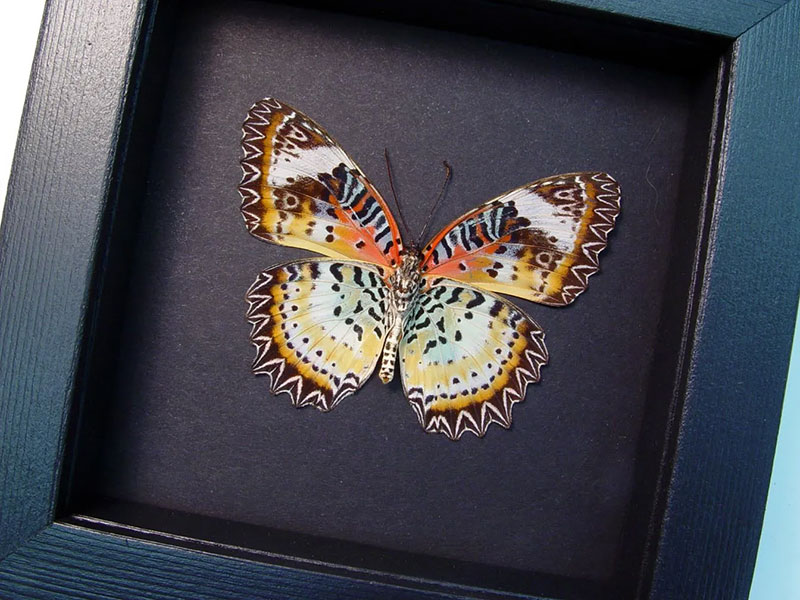
What are Cute Animals that Start With Z?
Here are the 5 cute animals beginning with the letter Z: Zebra Bullhead Shark, Zuchon, Zebra Mbuna, Zenaida Dove, and Zeren.
- Zebra Bullhead Shark (Heterodontus Zebra): It is a common inhabitant of the shallow waters in the western Pacific Ocean and the Indian Ocean, specifically on the continental and island shelves of northwestern Australia and eastern Asia. This shark has a large blunt head, low supra-orbital crest gradually sloping behind eyes, dorsal fin spines, anal fin, and a zebra pattern of dark, narrow vertical bands on a pale background. It can reach a length of 1.25 meters.
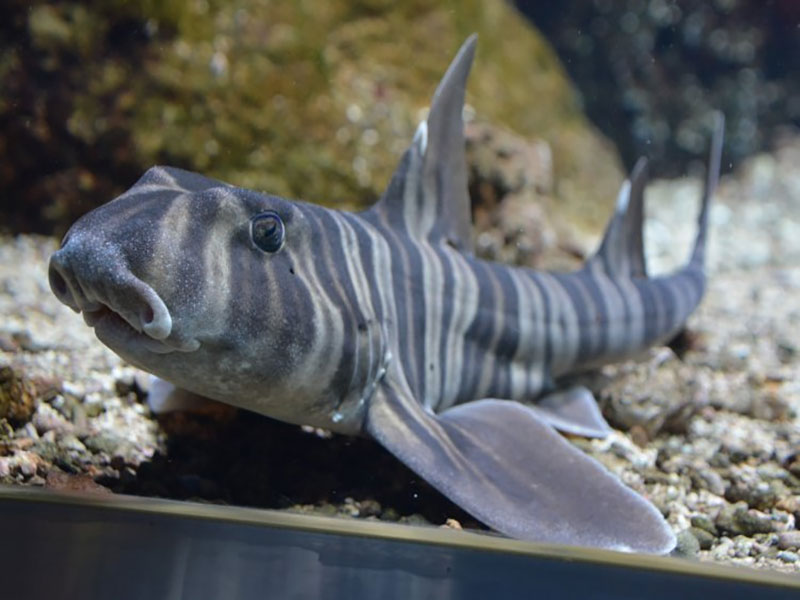
- Zuchon (Canis lupus): It is a hybrid dog breed developed in the United States in the 1990s, is a small, teddy-bear-looking dog. They are known for their affectionate nature, making them a great companion for both young and old. Zuchons stand at the shoulder roughly 9-12 inches tall and average about 5-15 lbs. They sport round heads, floppy ears, and large eyes. Their fur is long and can be either curly or silky. The color of their fur can be fawn, black, white, cream, red, or a combination of these colors.

- Zebra Mbuna (Maylandia zebra): It is a species of cichlid fish that is endemic to Lake Malawi, Africa. It inhabits rocky zones of the lake at varying depths. The size of this species varies, with males growing up to 6 inches and females up to 5 inches. The body of the Zebra Mbuna is usually blue with dark stripes. However, color variations can occur depending on their environment and mood.
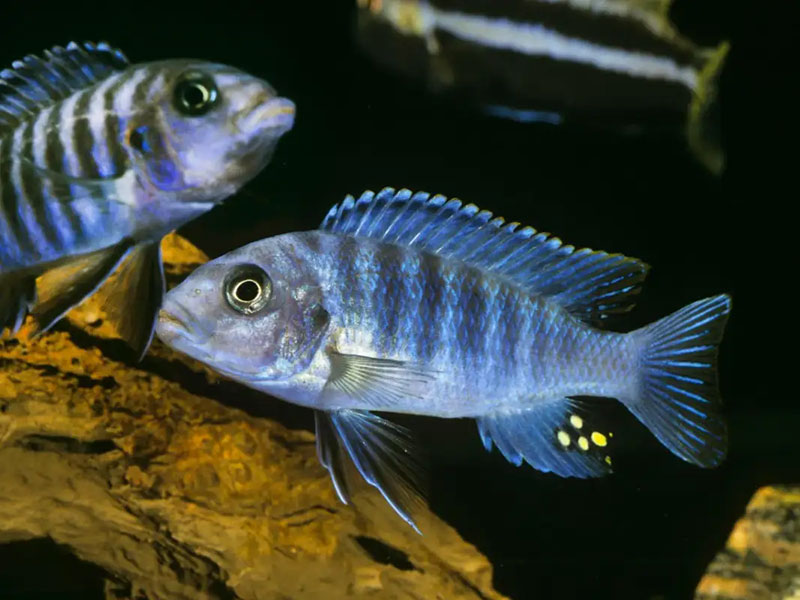
- Zenaida Dove: It is a bird species, that is found in a variety of open and semi-open habitats. It is known to breed throughout the Caribbean and the tip of the Yucatán Peninsula. This bird is approximately 28-30 cm in length. It has a shorter, more rounded tail and is a bit more darkly colored compared to the mourning dove. It also shows white on the trailing edge of its wings while in flight.
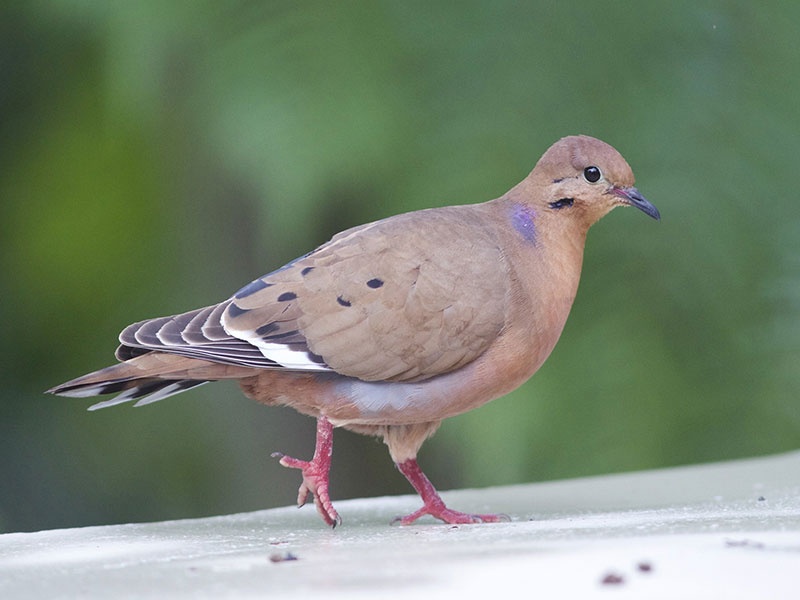
- Zeren (Mongolian gazelle): It is a medium-sized antelope native to the semi-arid Central Asian steppes of Mongolia, southern Siberia, and northern China. It has a coat of tawny light brown with pale pinkish tones, which grows thicker, longer, and paler during the winter.
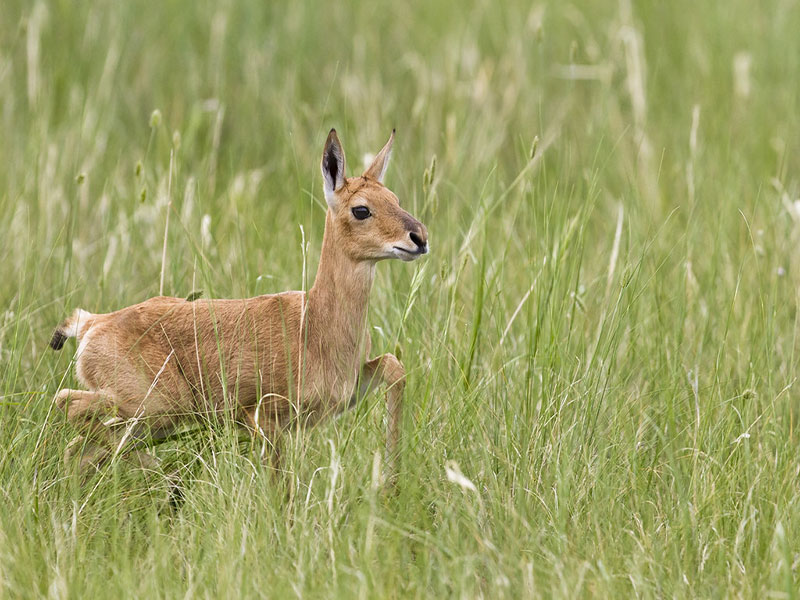
What are Sea Animals that Start With Z?
Here are the 5 sea animals beginning with the letter Z: Zebra Pleco, Zebra Mussels, Zonate sea hare, Zamurito, and Zenith Coral.
- Zebra Pleco (Hypancistrus zebra): It is a small fish native to the Xingu River in Brazil. It has a flat body with a bony back, and its mouth is located under its head. The fish exhibits a striking pattern of black and white stripes that run laterally. It typically reaches a size of about 3 to 4 inches (approximately 7.6 to 10.2 centimeters) in length when fully grown.
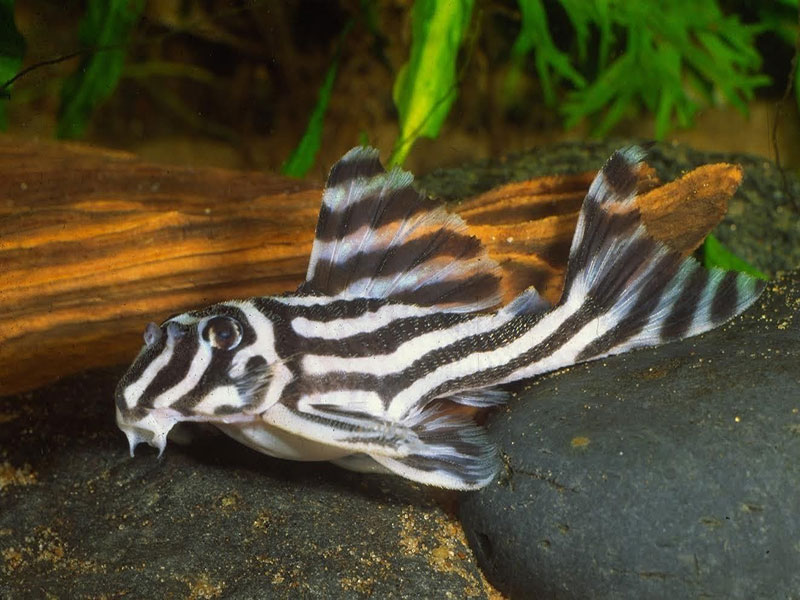
- Zebra Mussels (Dreissena polymorpha): They are small freshwater mussels originally native to the lakes of southern Russia and Ukraine. They live in still or slow-moving freshwater, attaching themselves to any hard surface underwater. Their shells are D-shaped, striped, and usually about the size of a fingernail, but can grow to a maximum length of around 50 mm (2 in) and about 0.5 inches (1.3 cm) in width.
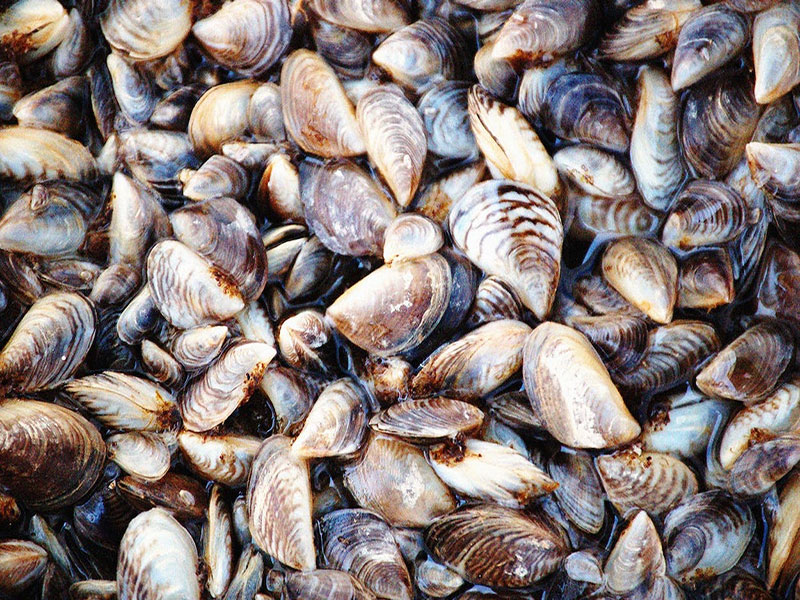
- Zonate sea hare (Anaspidea): It is a marine gastropod mollusk. It resides in shallow waters, often found on rocks or amidst seaweed. Its body is soft, with an internal shell made of protein. The sea hare’s color can range from black to very dark brown, sometimes with a thin red border to the parapodia, foot, and tentacles. It can grow up to 1 foot (30 cm) in length and weigh up to 2 pounds (1 kg).
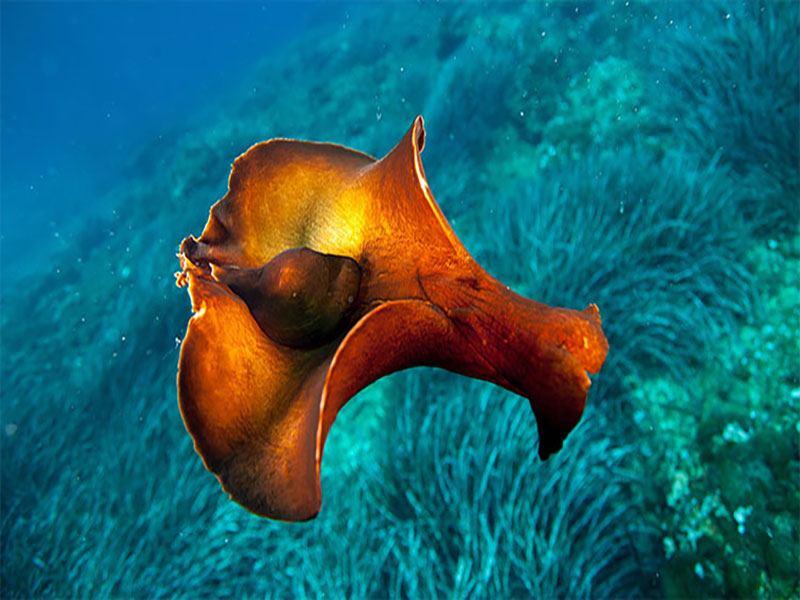
- Zamurito (Calophysus macropterus): It is a species of catfish that can be found in the Amazon and Orinoco basins. It’s known for its adaptability and hardiness, making it suitable for large aquariums. Despite its size, it’s reported to commonly attack fish caught in fishermen’s nets.
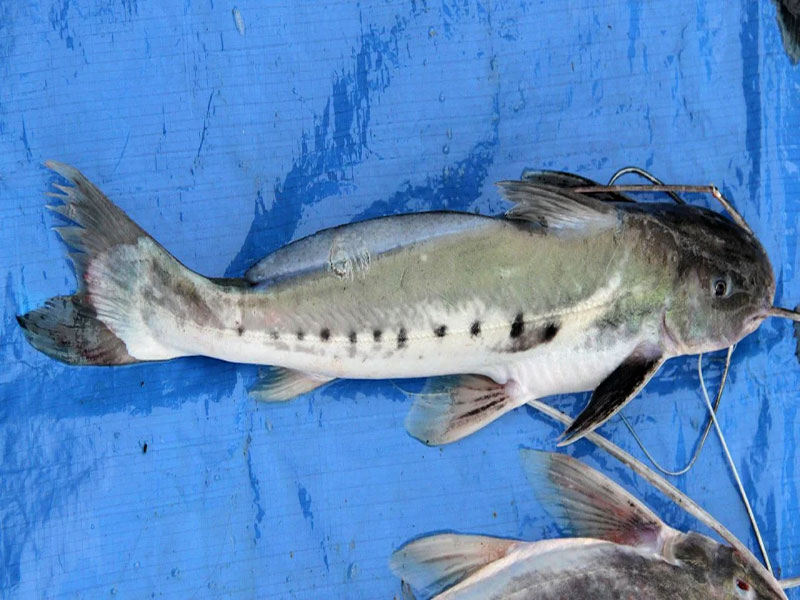
- Zenith Coral (Zoanthus): It is a popular coral in reef aquariums. It’s found in various marine habitats, from shallow to deep waters. This coral exhibits bright colors and resembles a flower. It grows fast, colonizing areas quickly. The coral’s polyp has a mouth surrounded by tentacles. The size of the polyp can vary, with some being larger and others smaller.
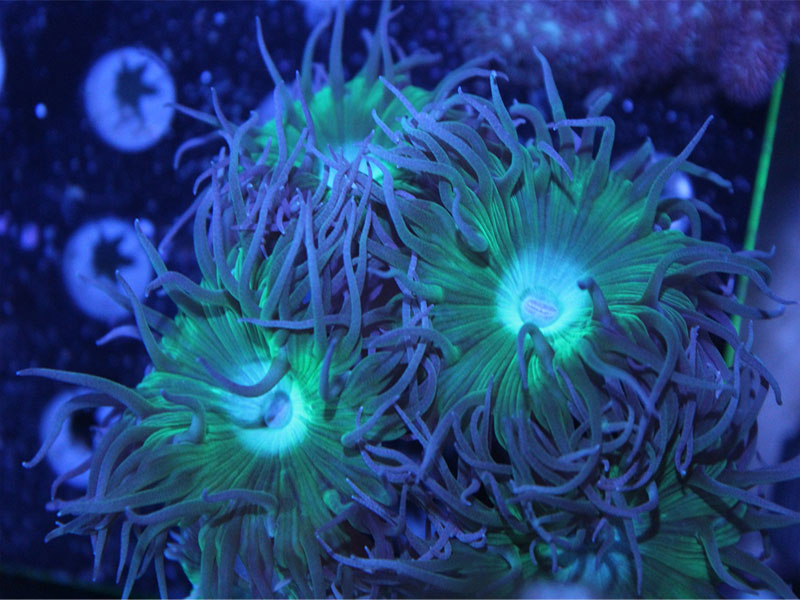
What are Wild Animals that Start With Z?
Here are the 5 wild animals beginning with the letter Z: Zokor, Zorilla, Zanzibar Red Bishop, Zonata Snake, and Zanzibar Red Colobus.
- Zokor (Myospalax): They are subterranean rodents native to North Asia. They have a cylindrical body, short powerful limbs, and large robust feet. Their long front claws are self-sharpening and very strong. Their fur ranges from grayish to reddish brown. They inhabit meadows in wooded regions and along river valleys, particularly mountain valleys at elevations between 900 and 2,200 meters.
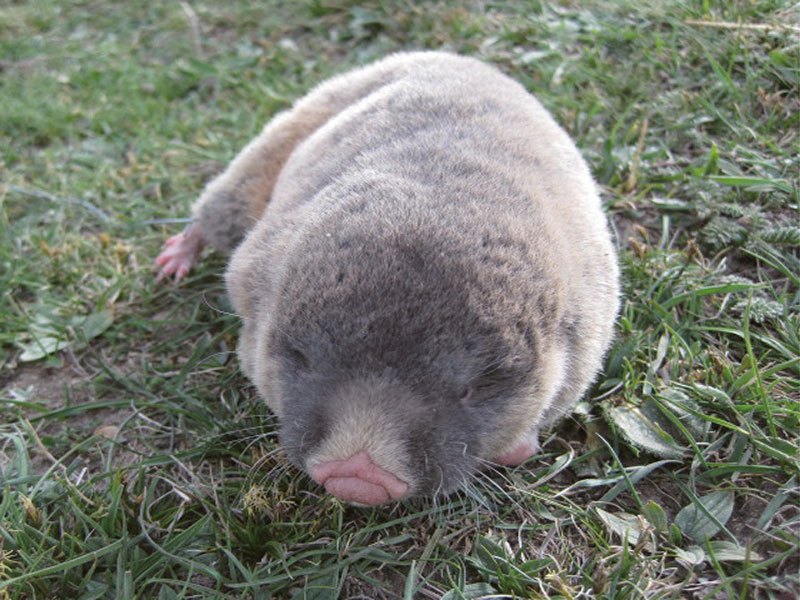
- Zorilla (Ictonyx striatus): It is a member of the Mustelidae family. It is found in diverse habitats across Central, Southern, and Sub-Saharan Africa, excluding the Congo basin and coastal areas of West Africa. The Zorilla has a slender body measuring 29-39 cm in length, with a bushy white tail that is 21-31 cm long. It weighs between 0.6 and 1.3 kg. Its fur is long and black, with white stripes on the back and white spots on the face.
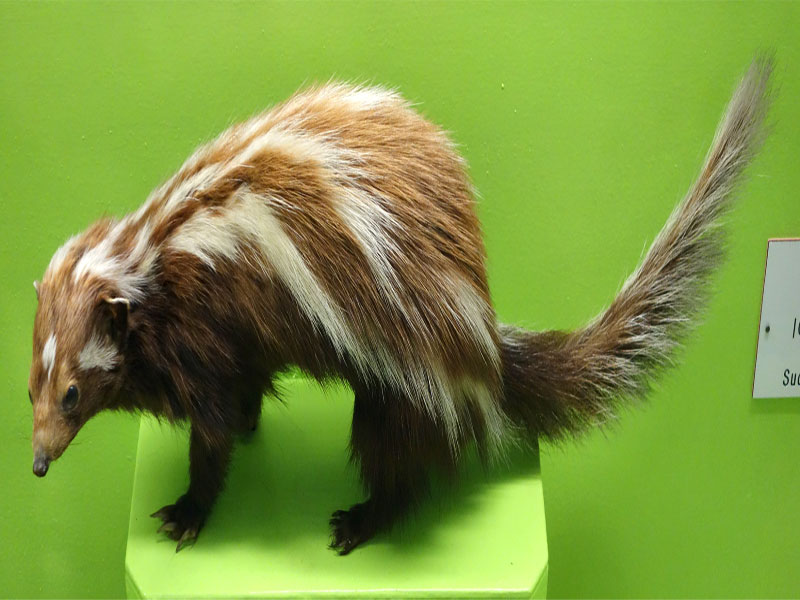
- Zanzibar Red Bishop (Euplectes nigroventris): It is a bird species found in Kenya, Mozambique, and Tanzania. It thrives in moist areas such as marshes, flooded grasslands, and cultivated areas. The breeding males are striking with completely black underparts and mostly orange-red upperparts. This bird is smaller than most other bishops. It measures about 10 cm in size and weighs between 11 to 14 grams.
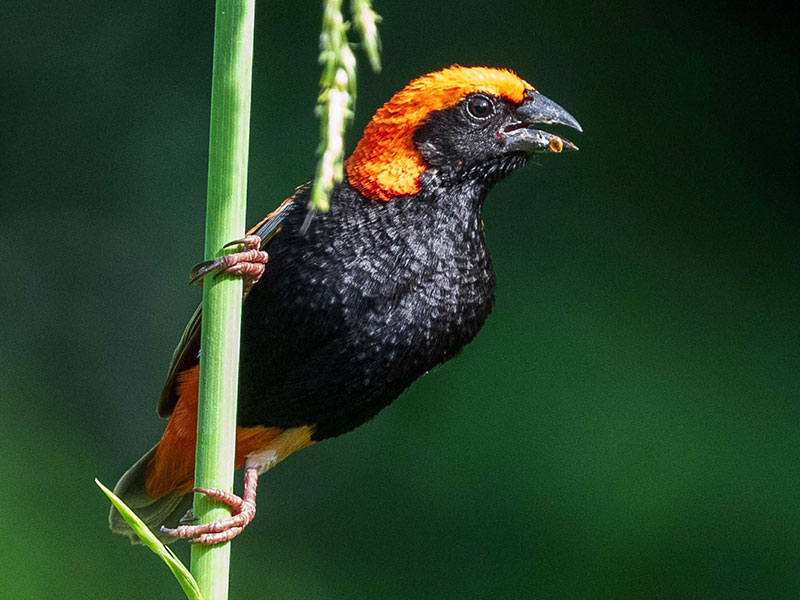
- Zonata Snake (Lampropeltis zonata): It is a nonvenomous species native to North America. It thrives in various habitats, including coniferous forests, oak woodlands, and coastal sage scrub, from sea level to 3,000 meters. This snake exhibits a striking pattern of red, black, and white bands. Adults typically measure between 24 to 30 inches long. Upon hatching, juveniles are about 20.0 to 27.2 cm in length and weigh approximately 5.7 to 7.7 grams.
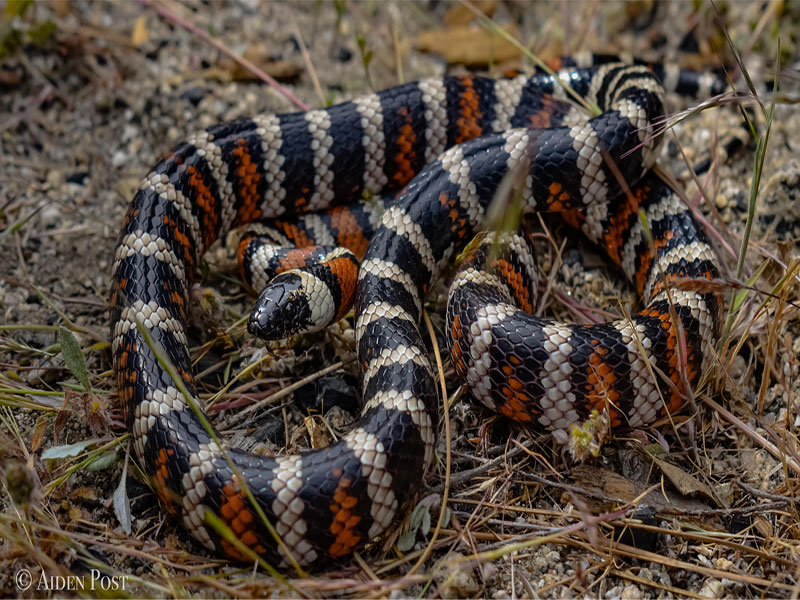
- Zanzibar Red Colobus (Piliocolobus kirkii) is a species of red colobus monkey endemic to Unguja. The monkey has dark red to black fur, accented with a black stripe along the shoulders and arms, and a pale underside. The average head-to-body length range for both sexes is between 45-65 cm, with an average tail length ranging from 58–77 cm. Both males and females weigh between 5.2–11.3 kg.
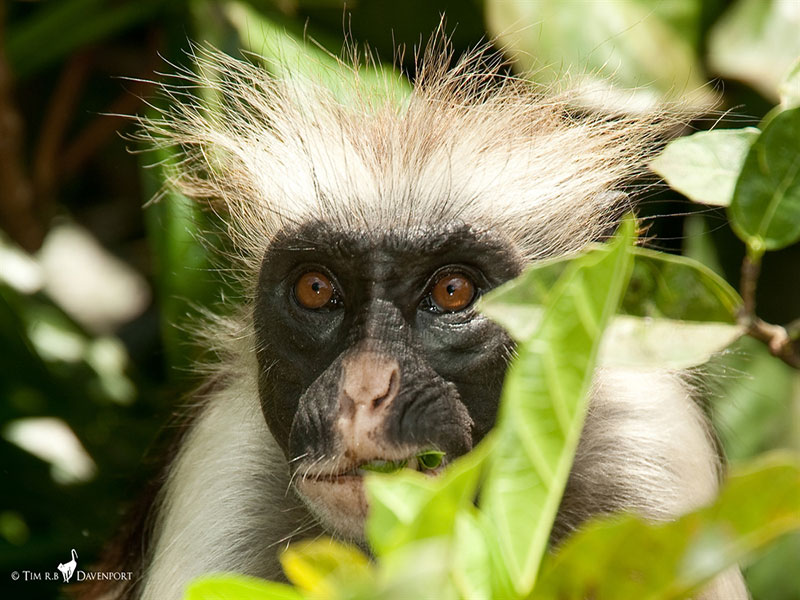
This article has brought you the animal kingdom filled with remarkable diversity, and those beginning with the letter “Z”. Some, like the Zebra Shark and Zebra Pleco, highlight the beauty and fragility of aquatic ecosystems, while hybrids such as the Zonkey and Zorse showcase human fascination with interspecies breeding. If you want to explore more unique creatures and the wonder of nature’s variety, please visit Animal Pedia for more details.
If you’re searching for animal names starting with a different letter, explore our other comprehensive articles dedicated to animal names.
